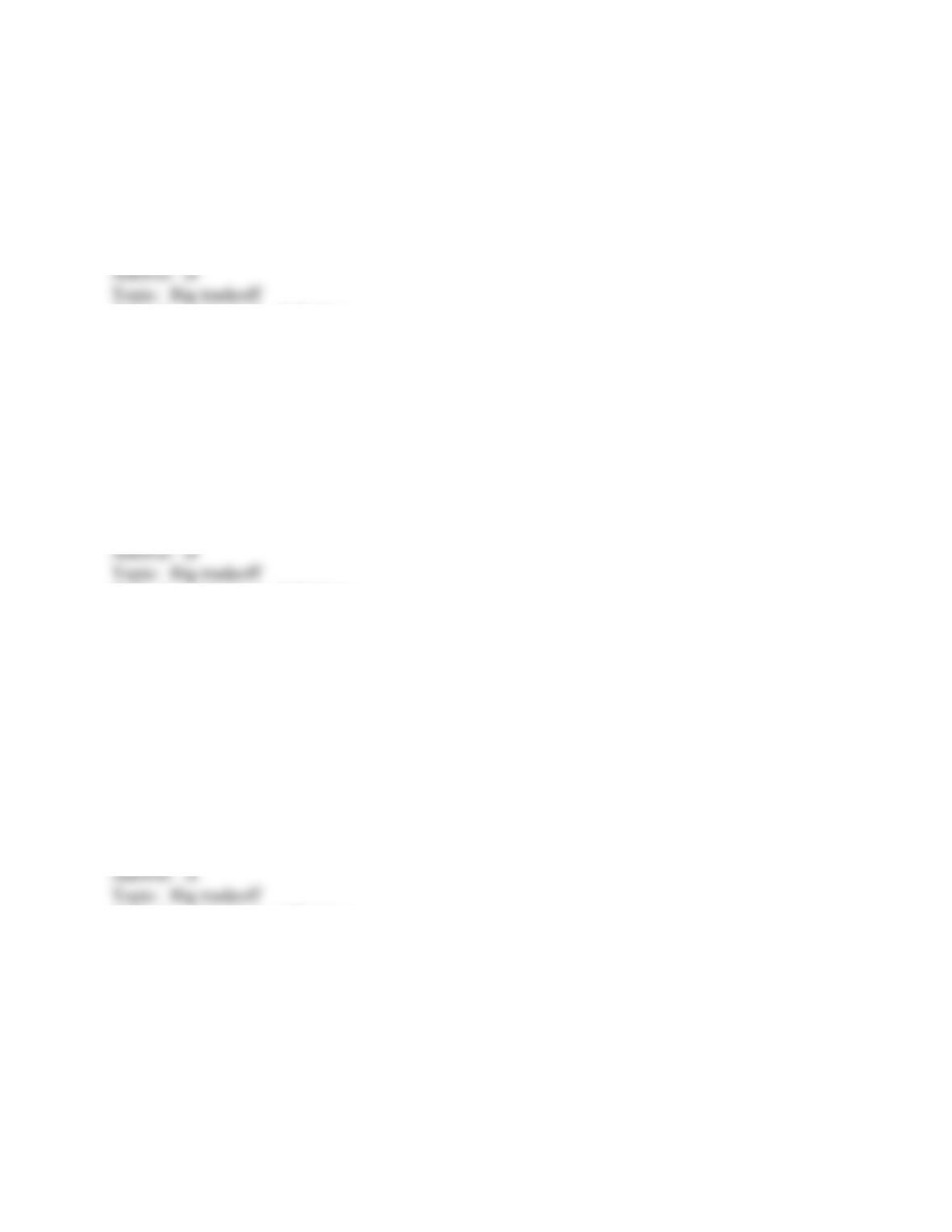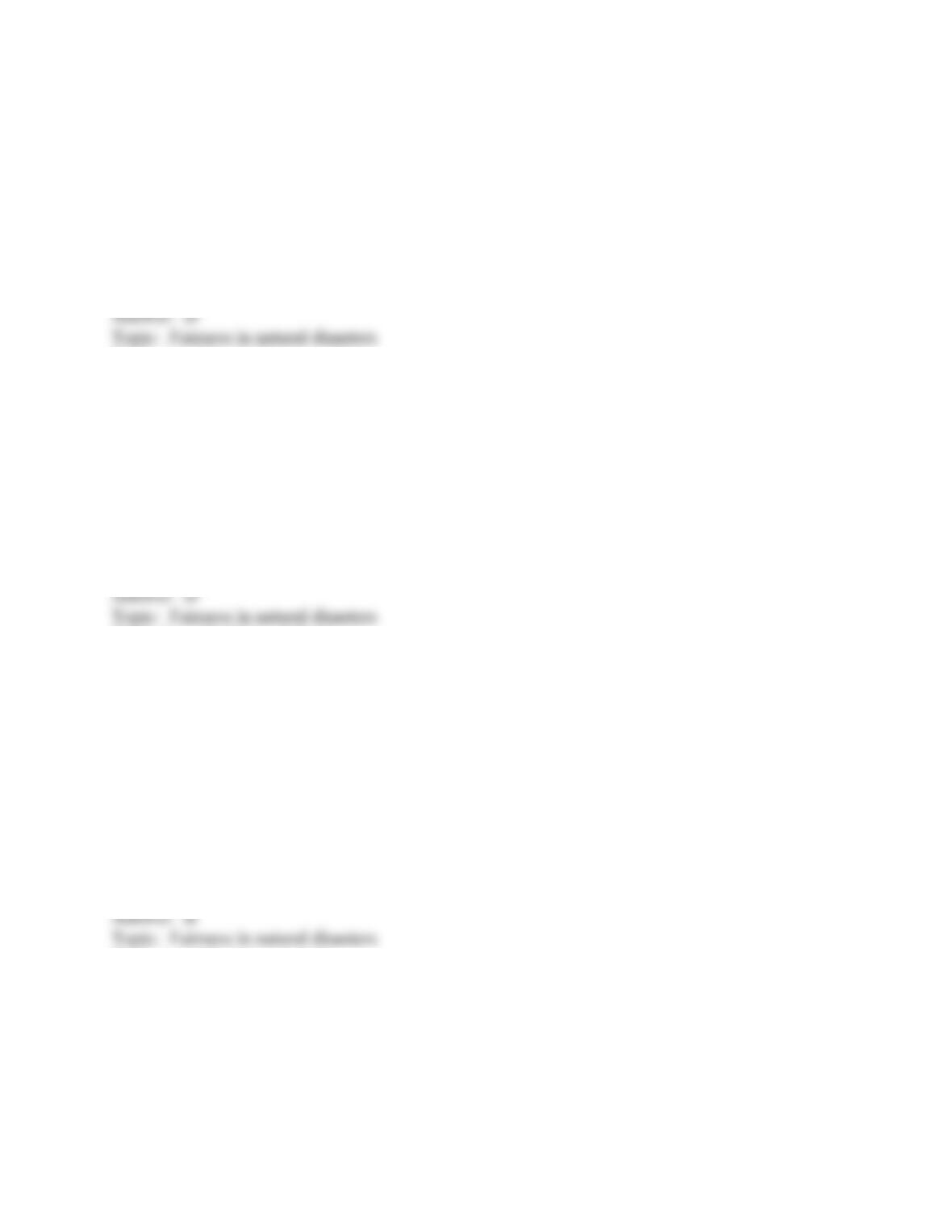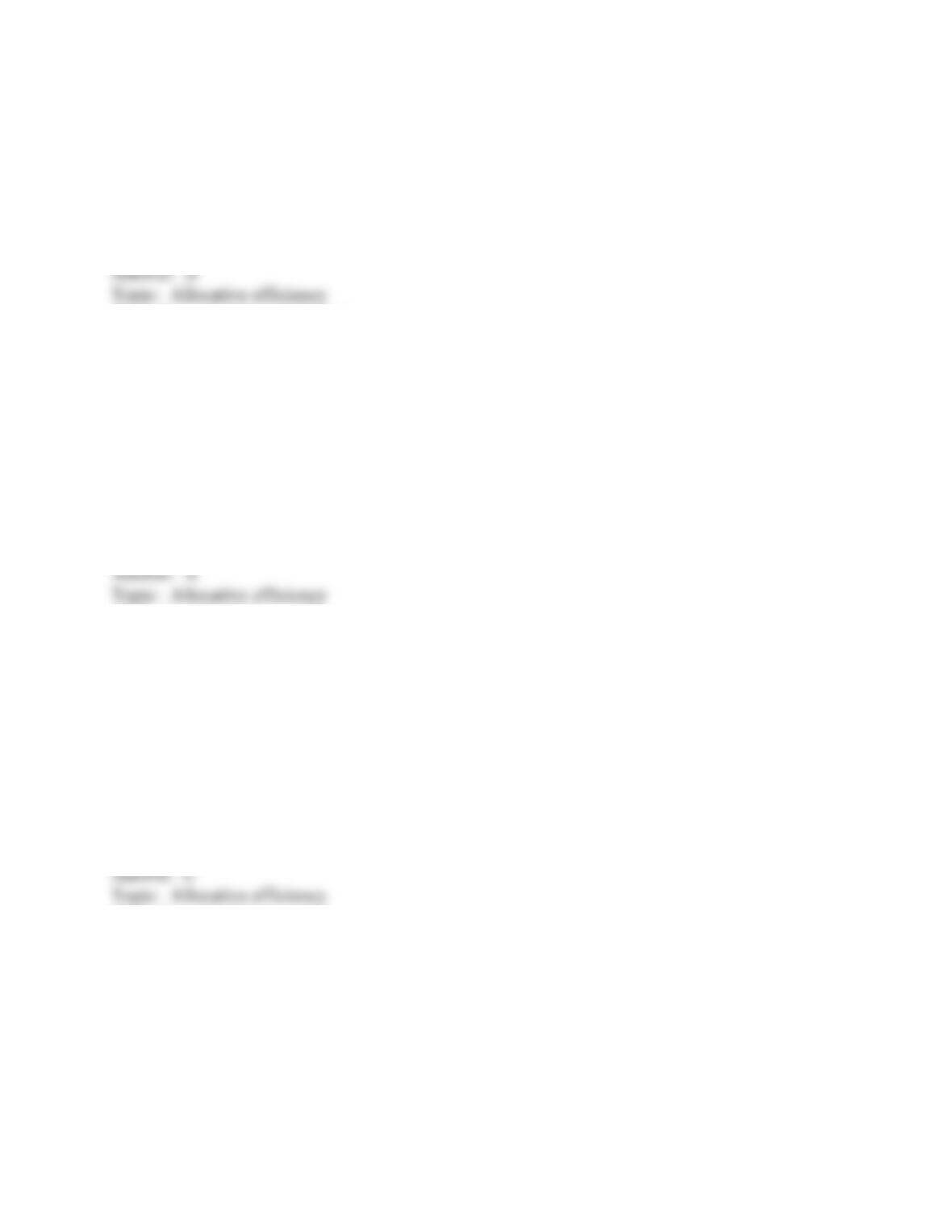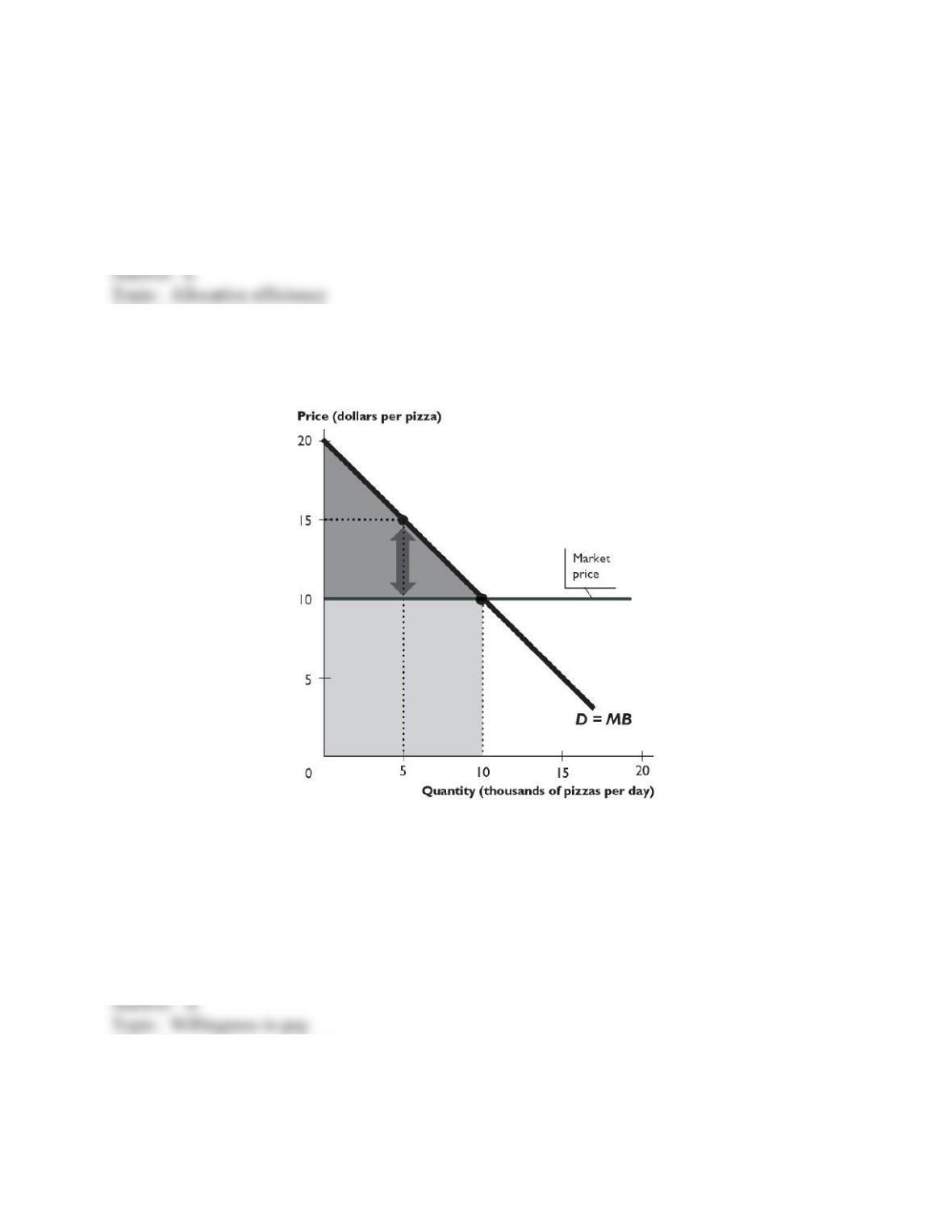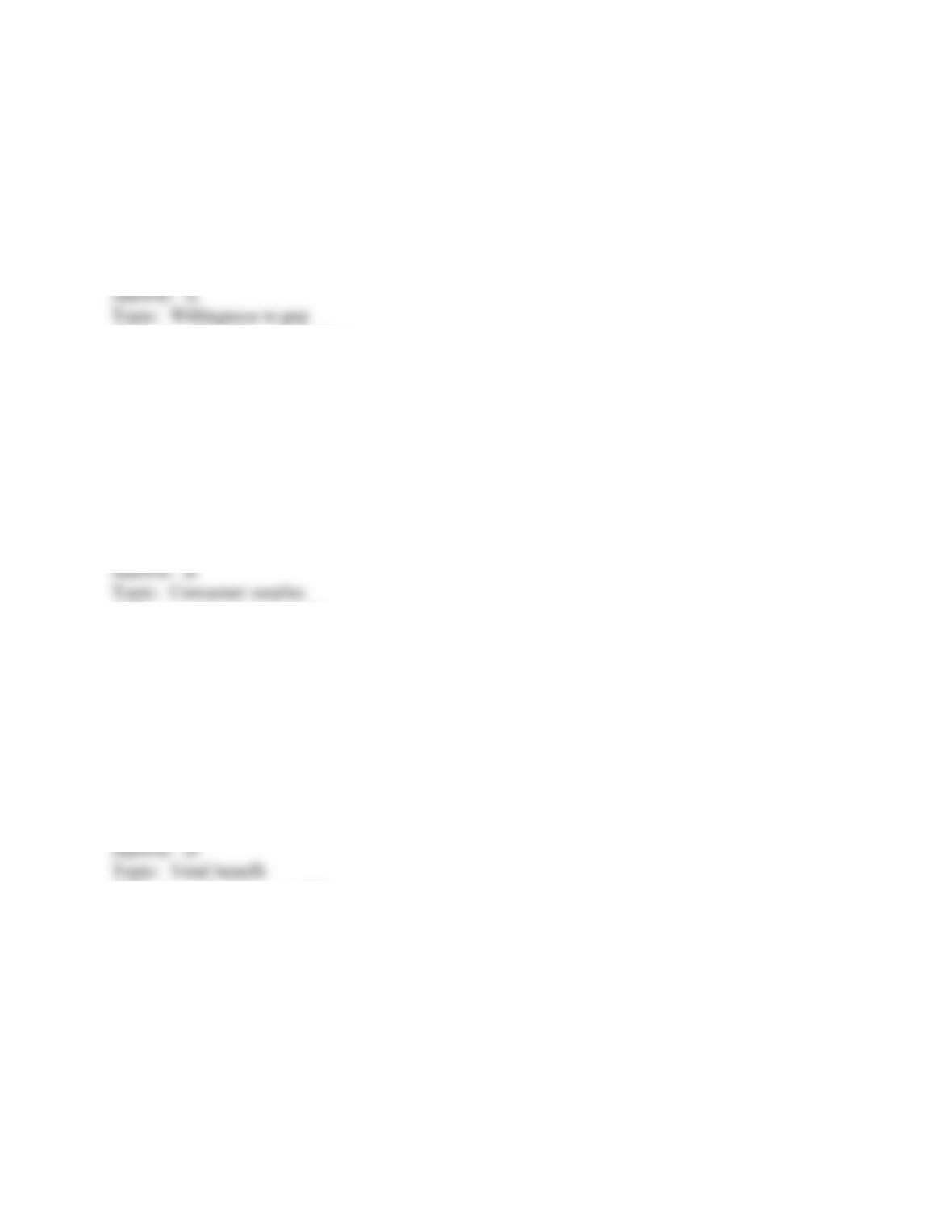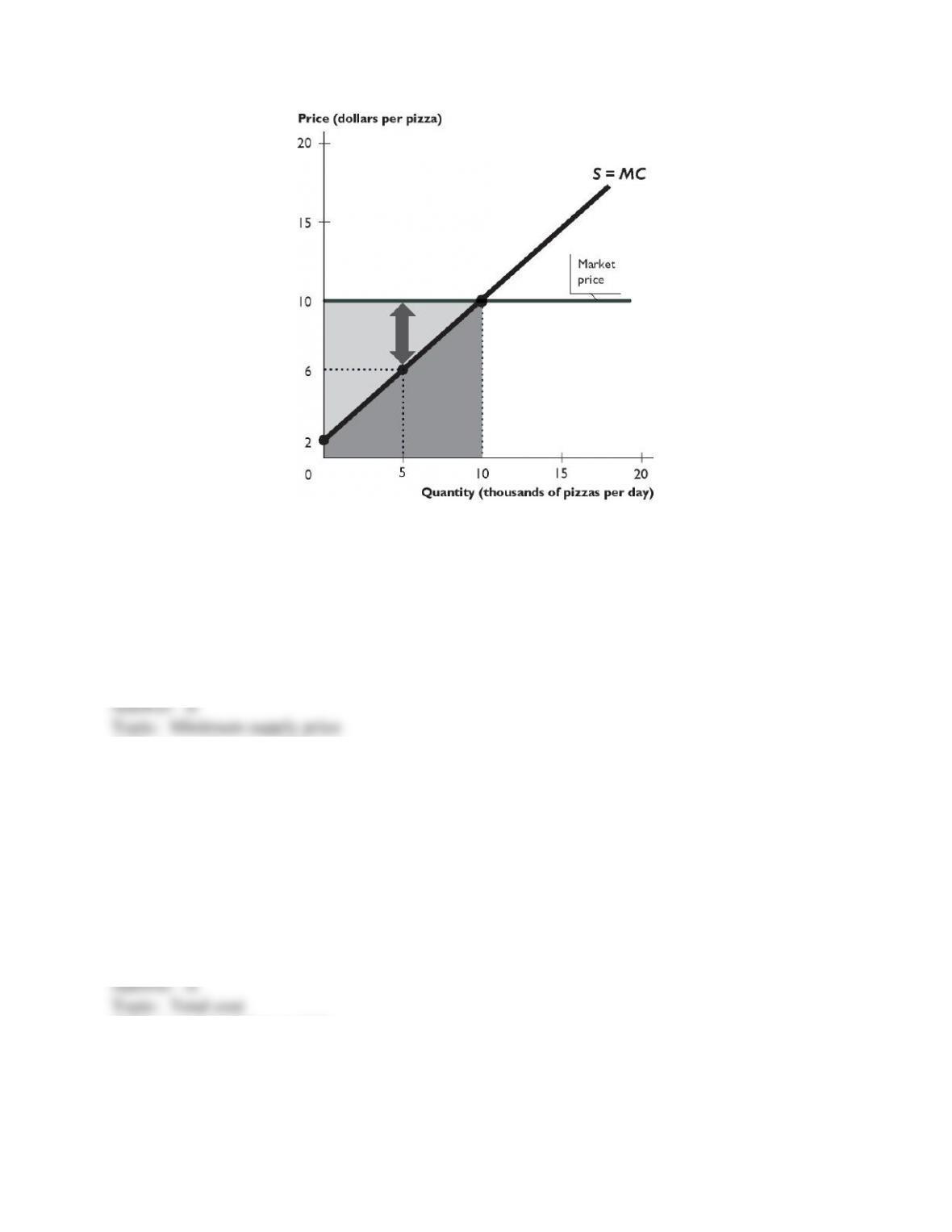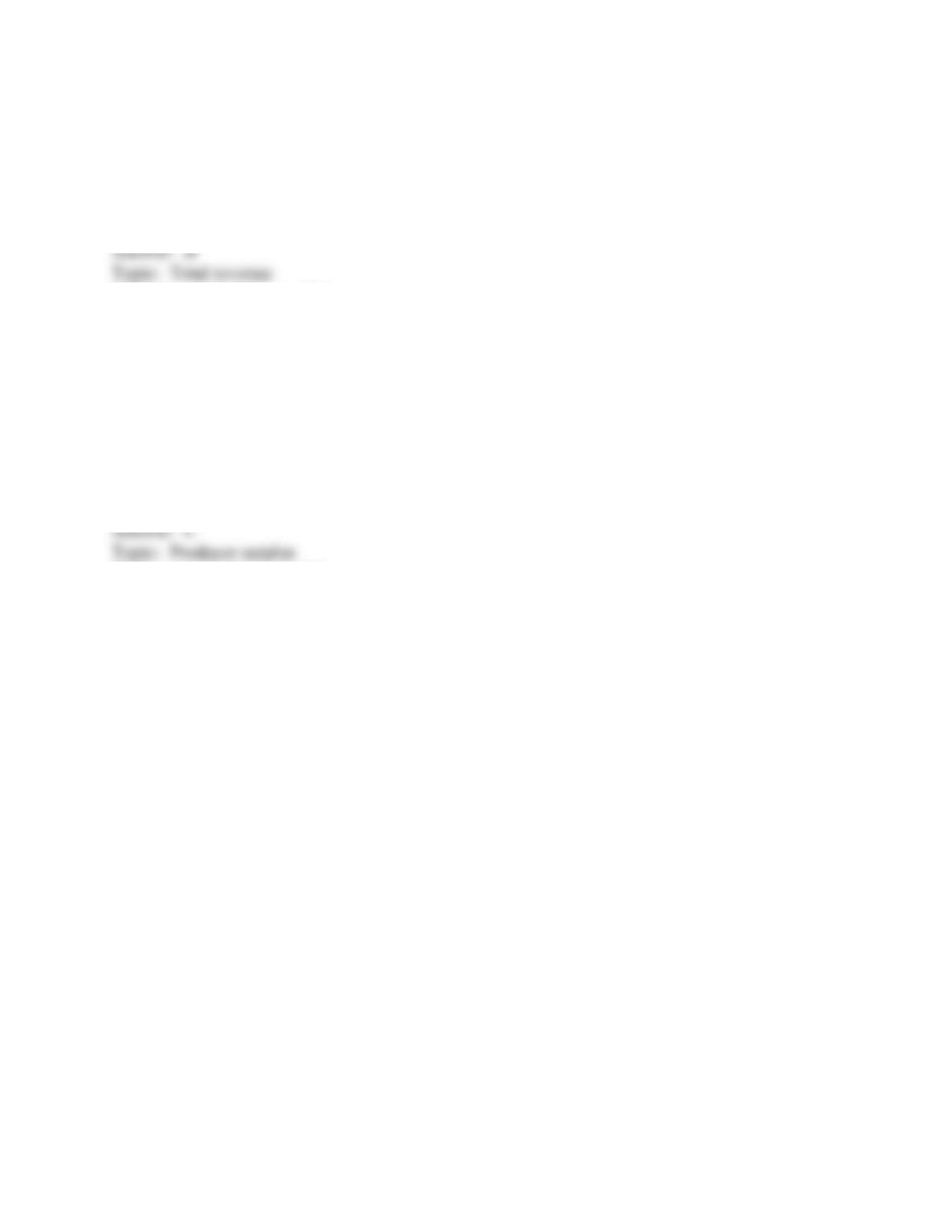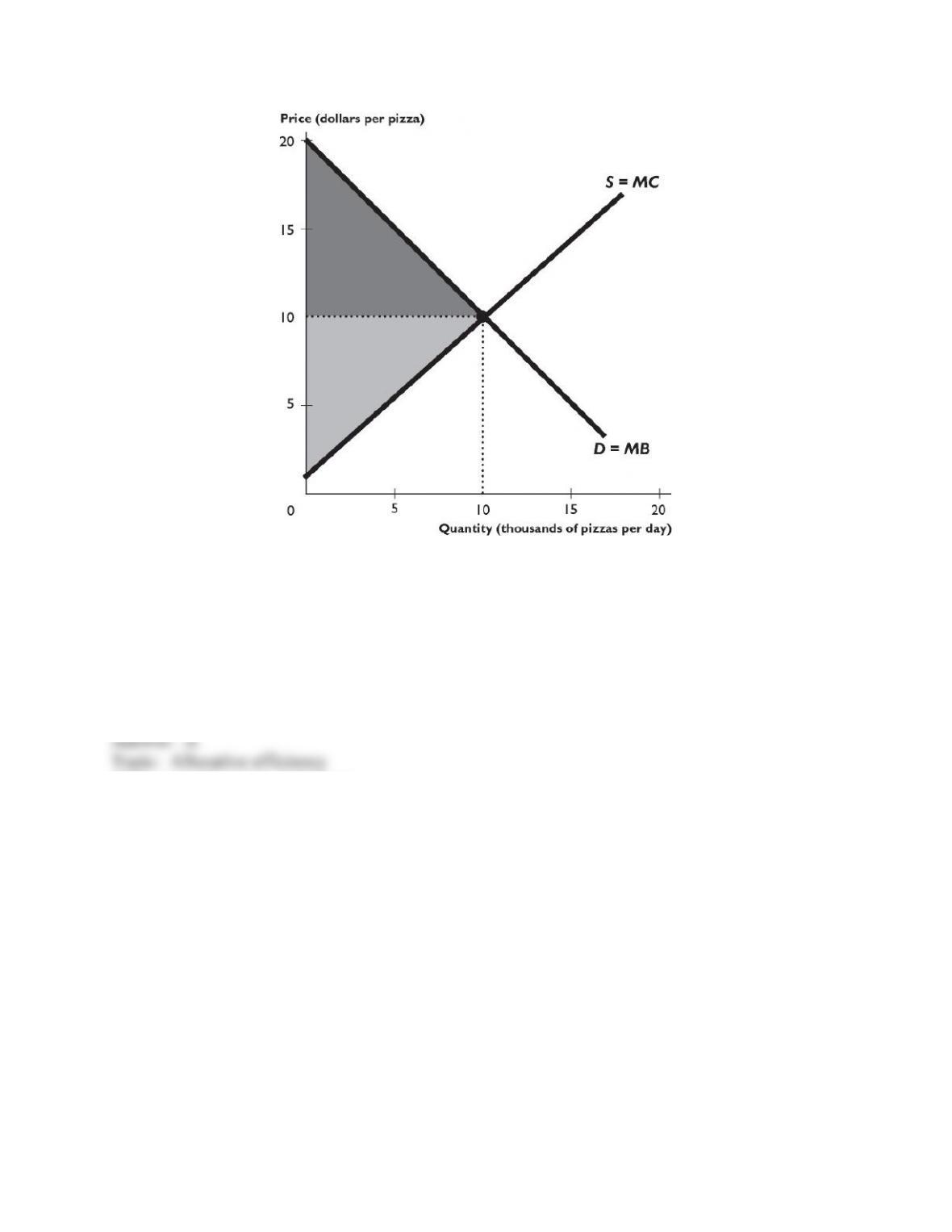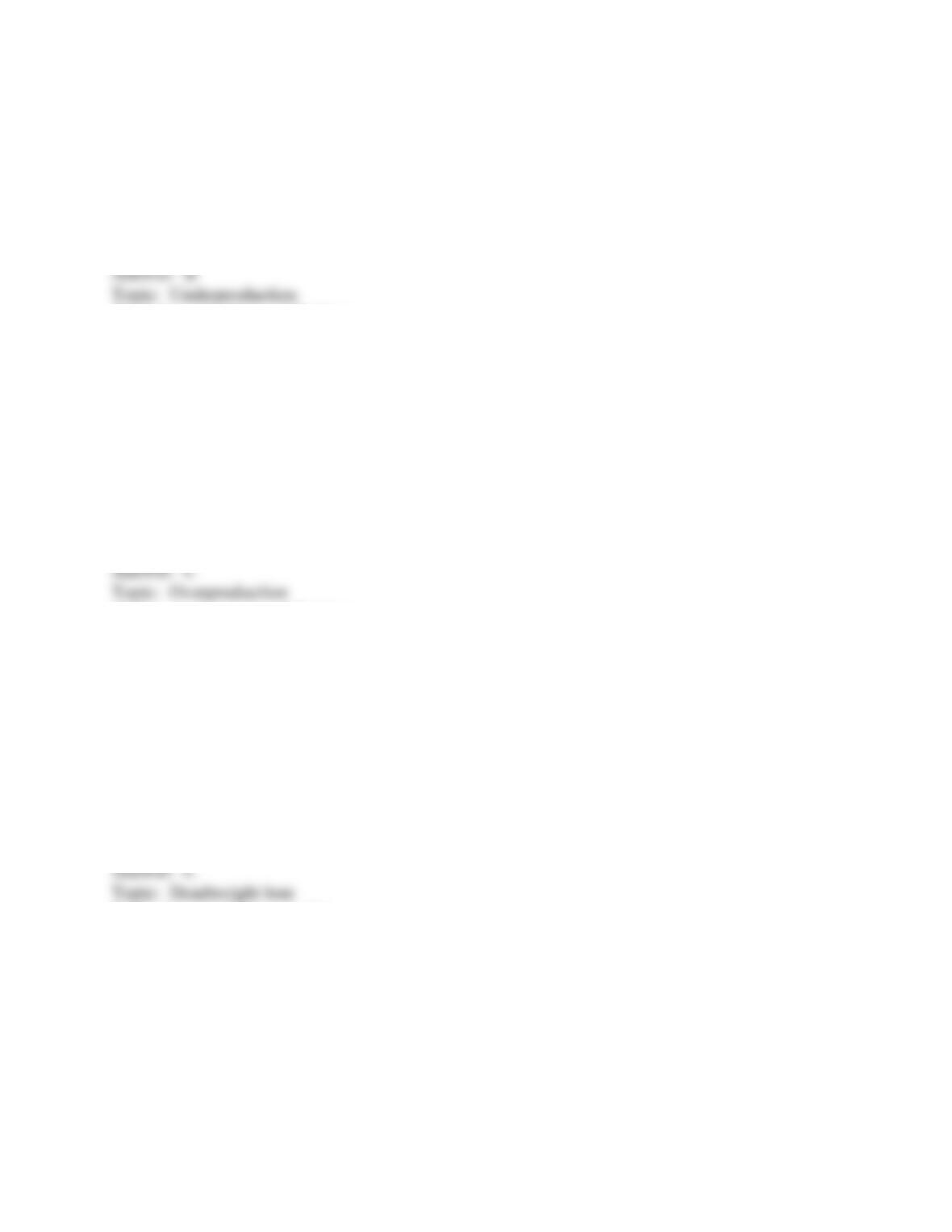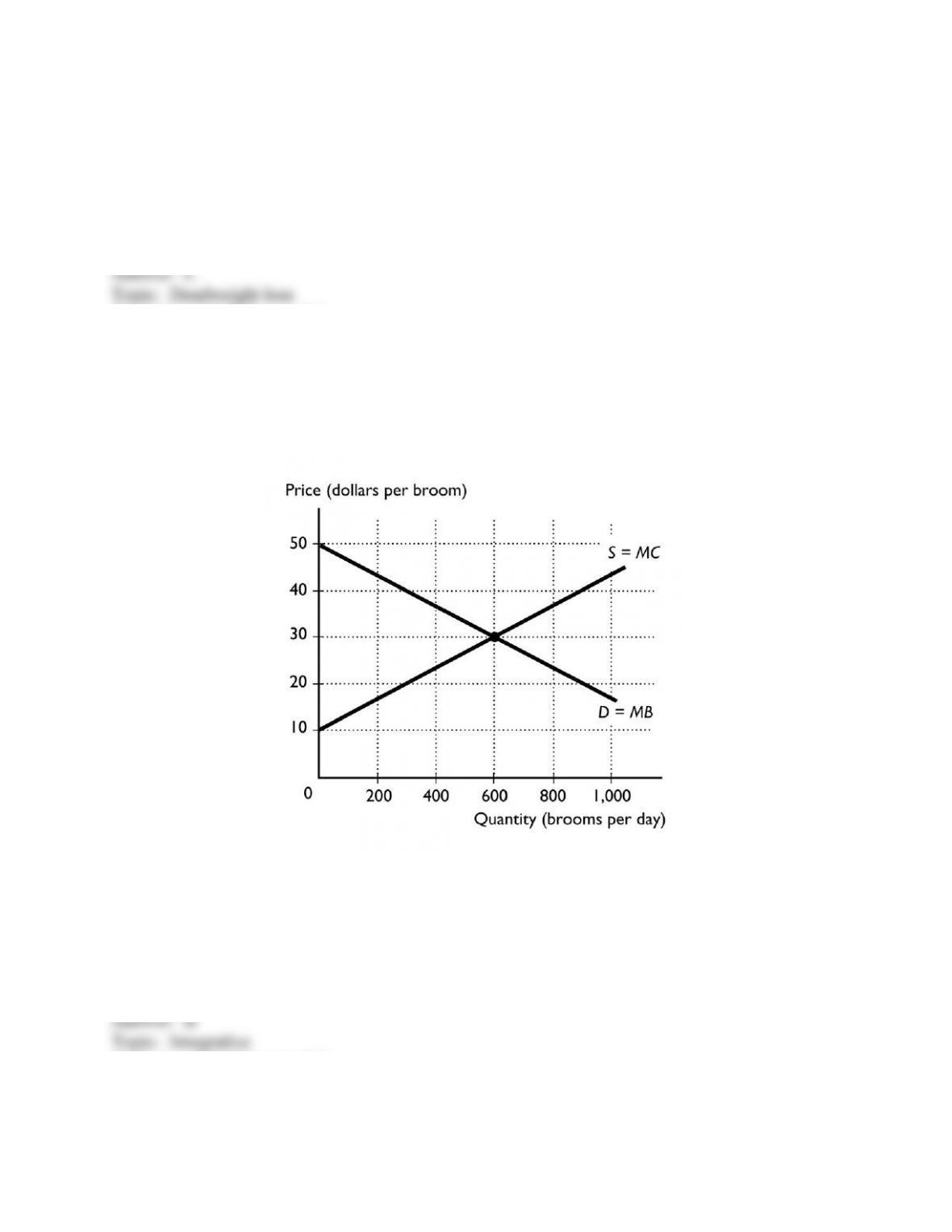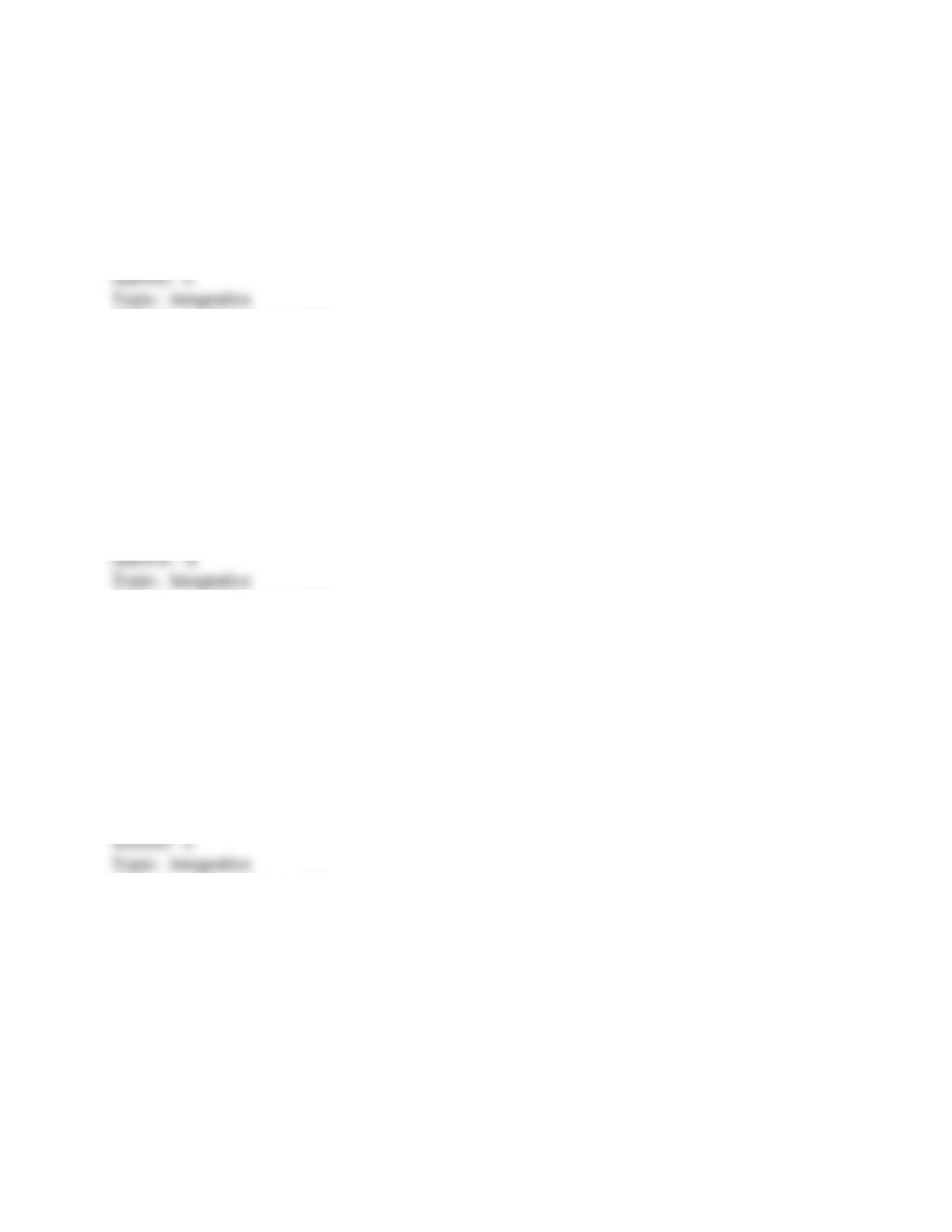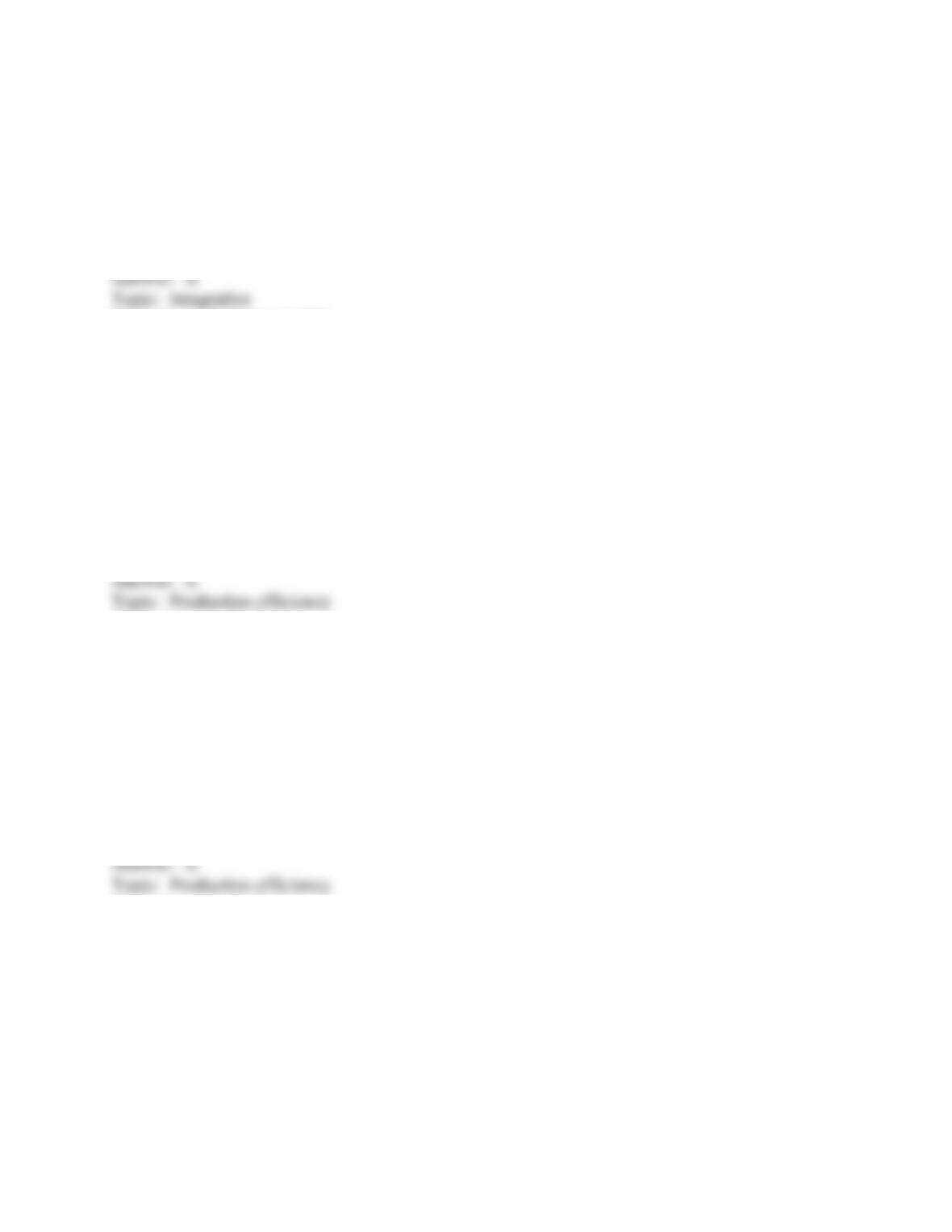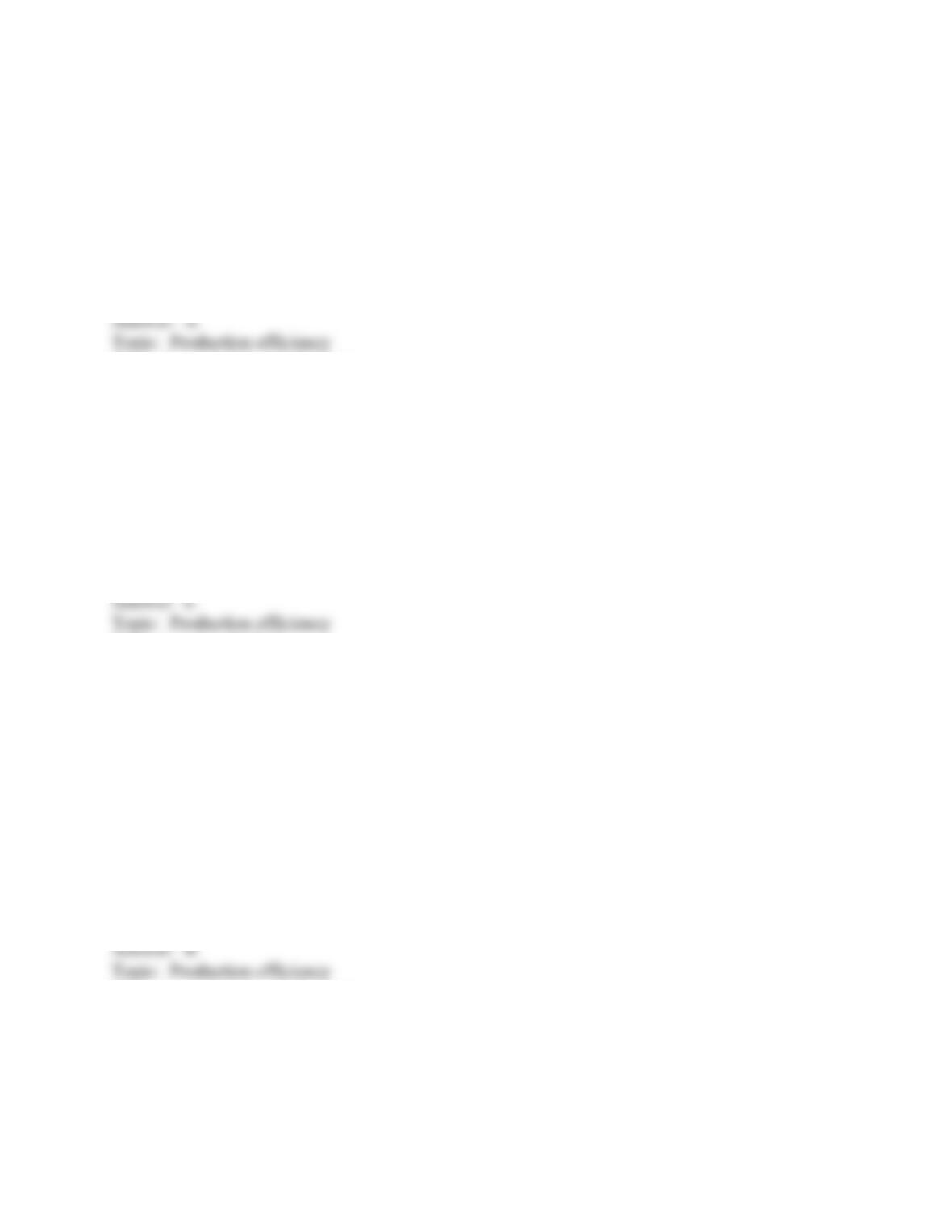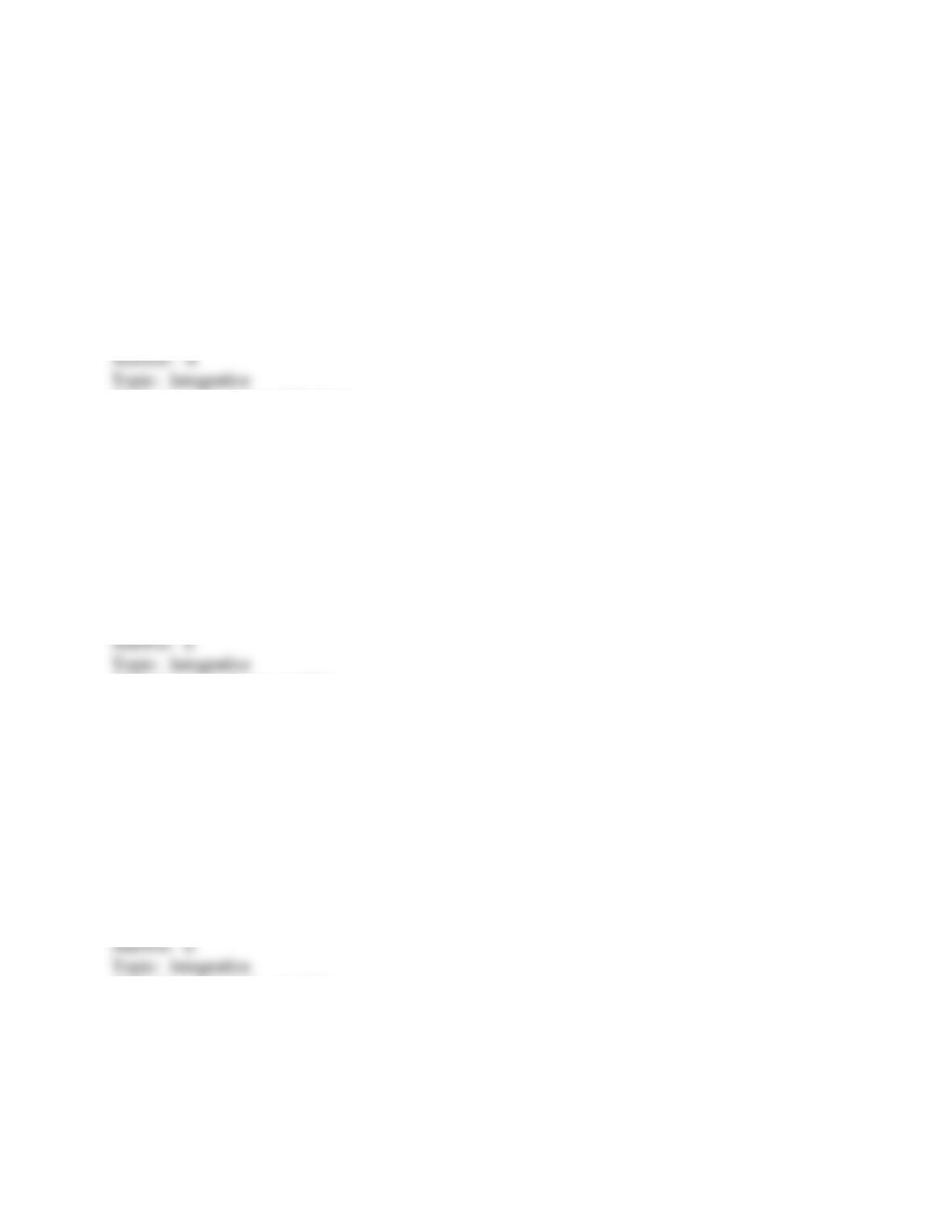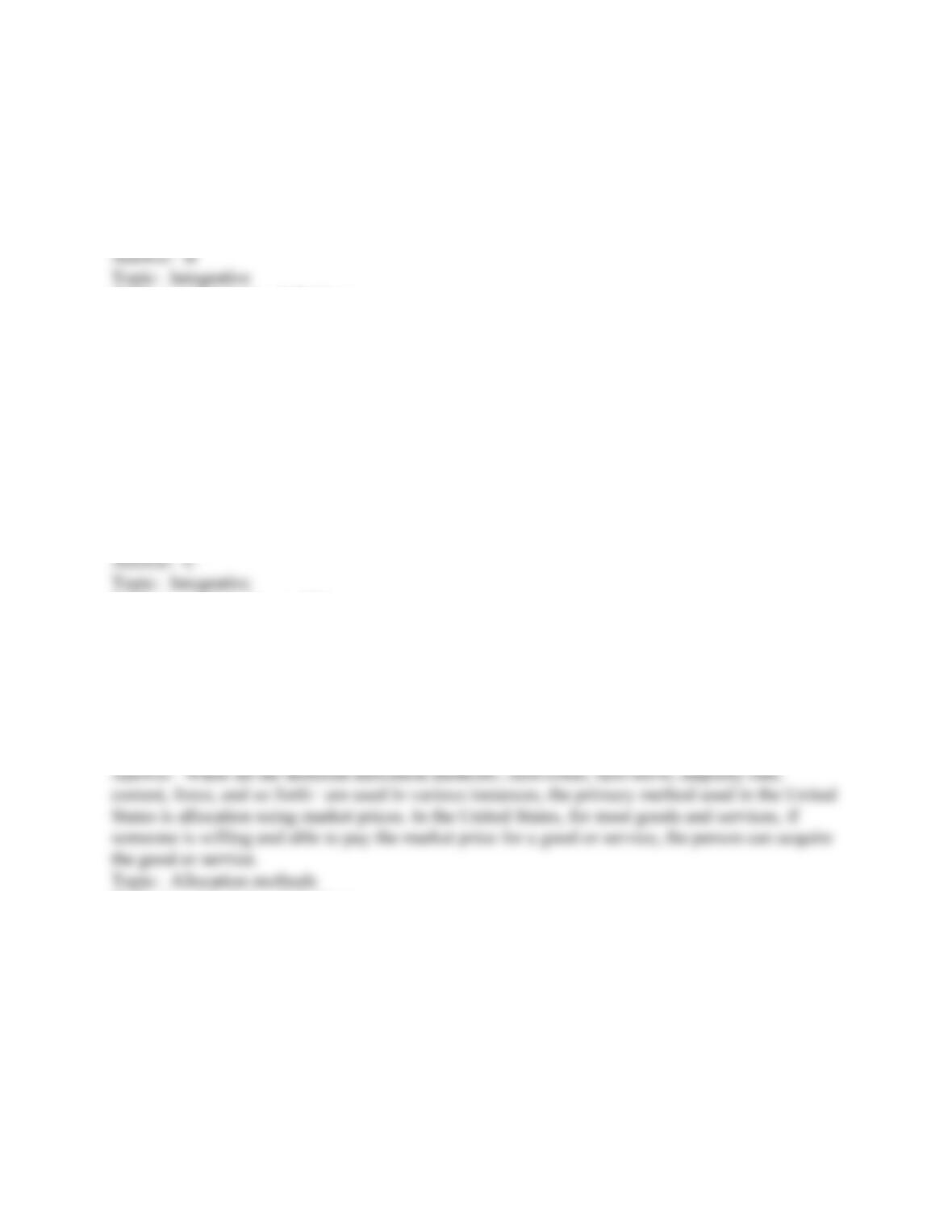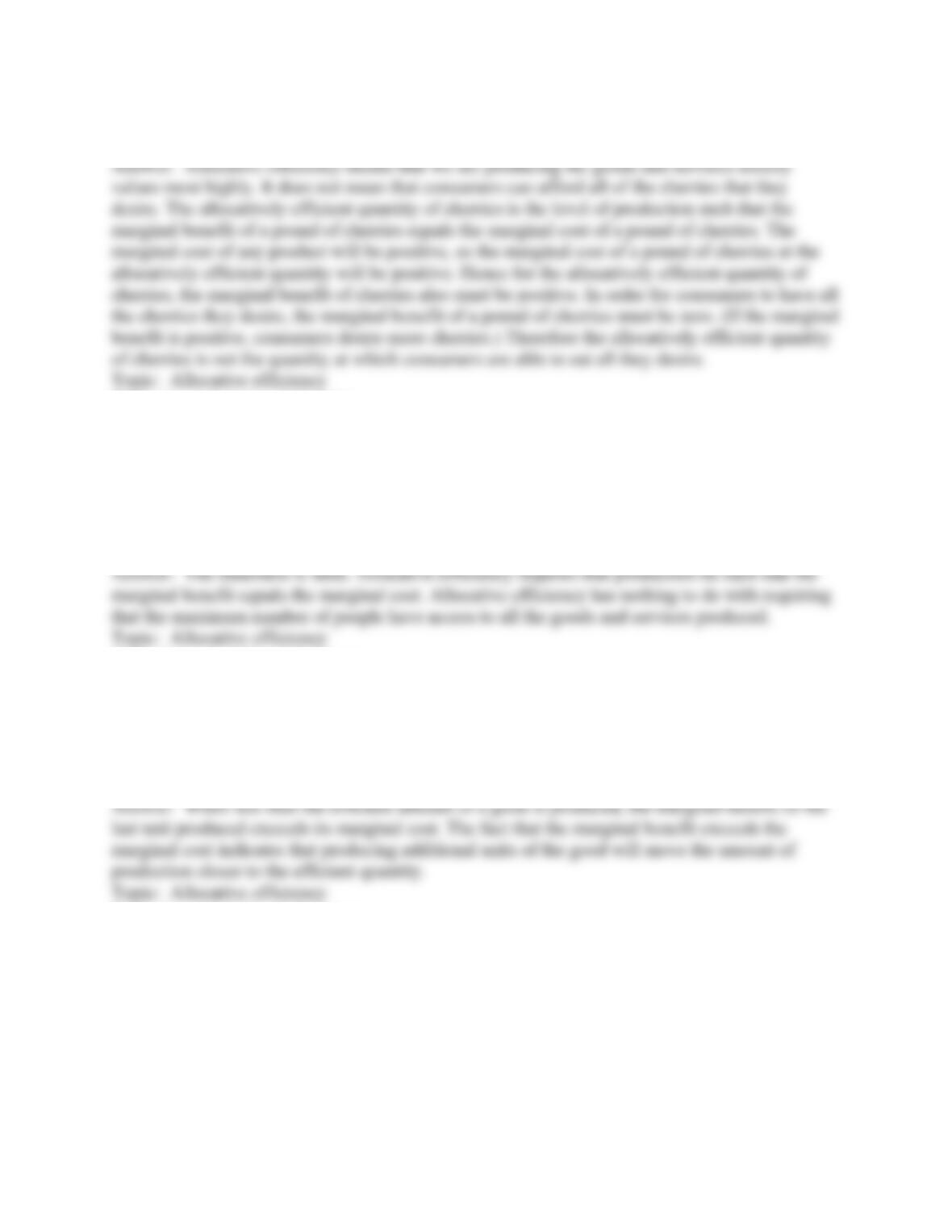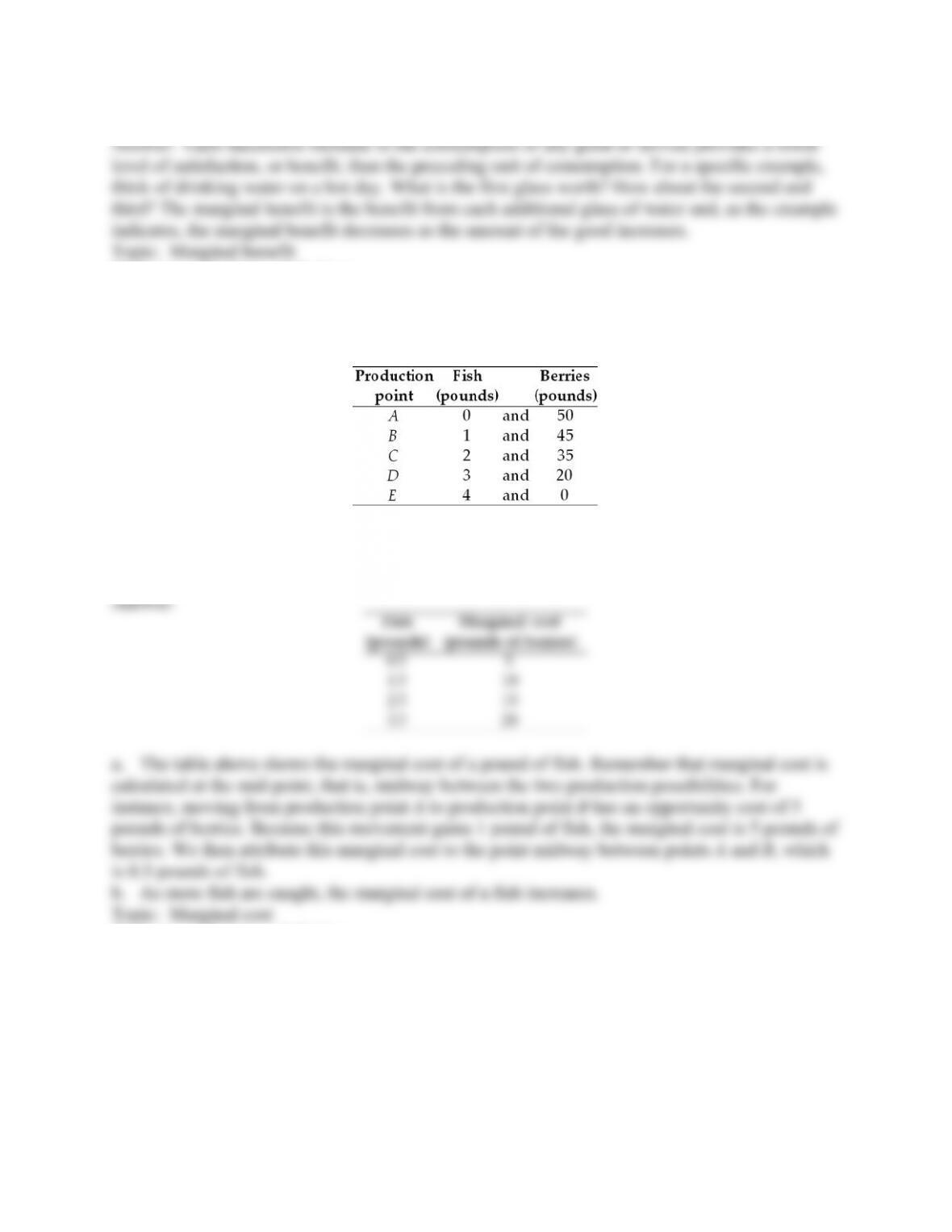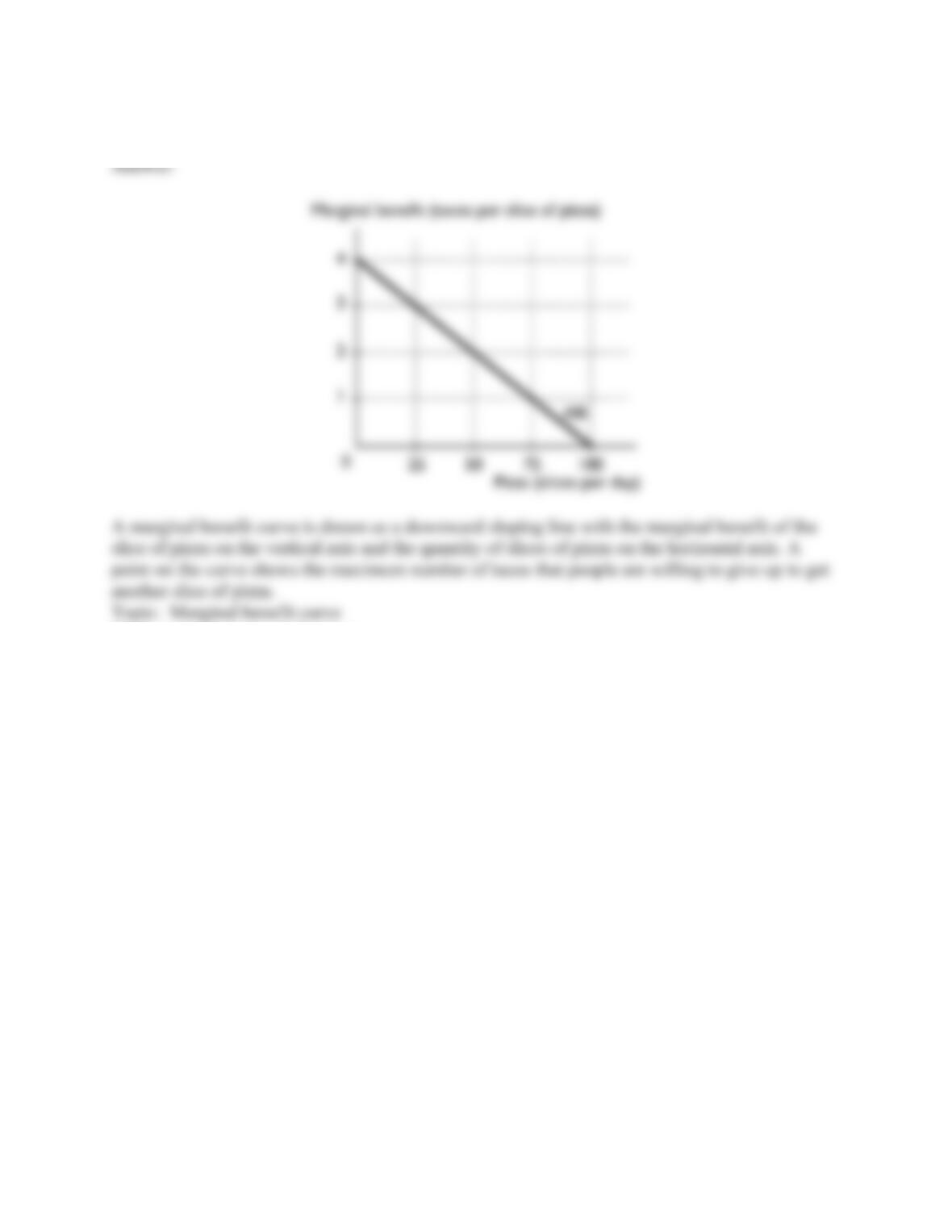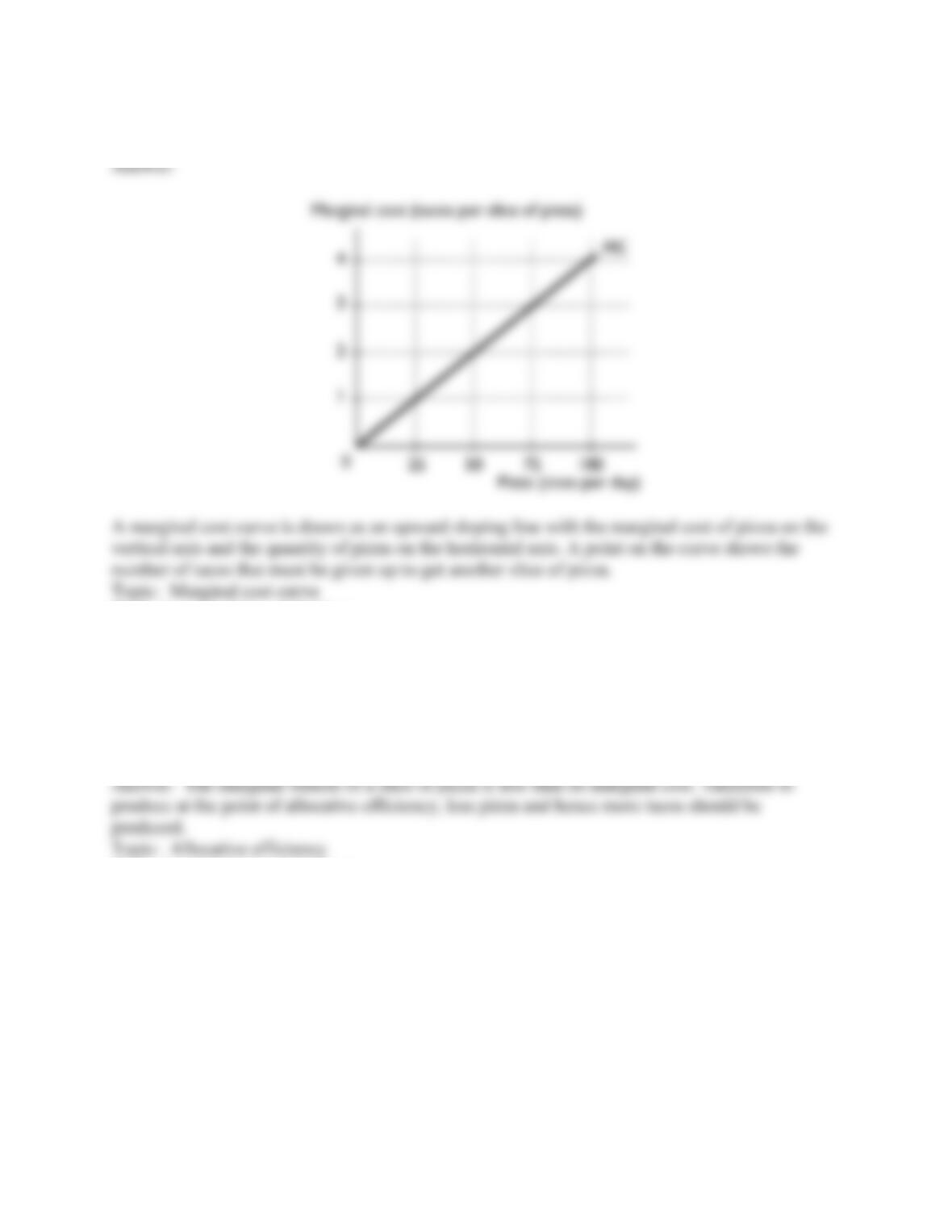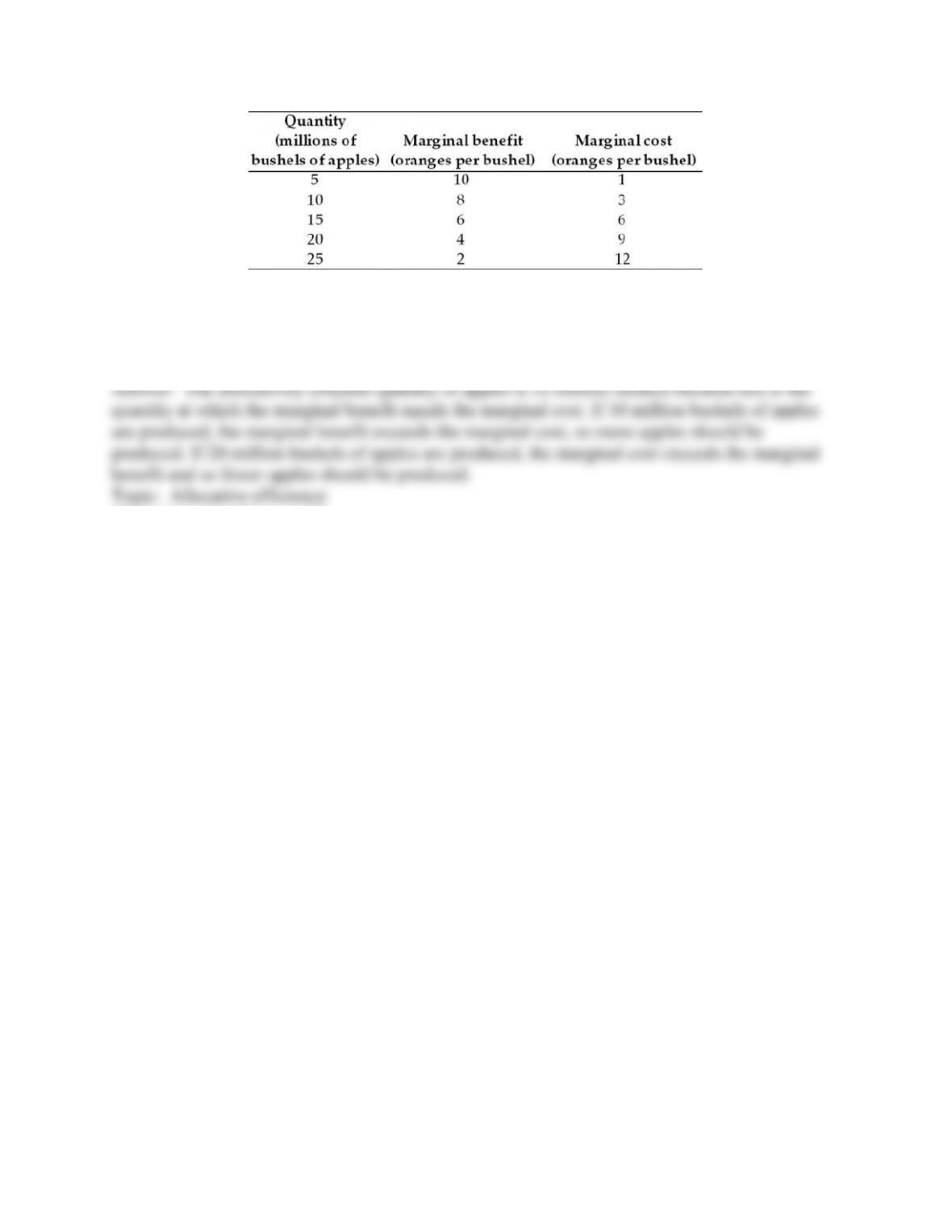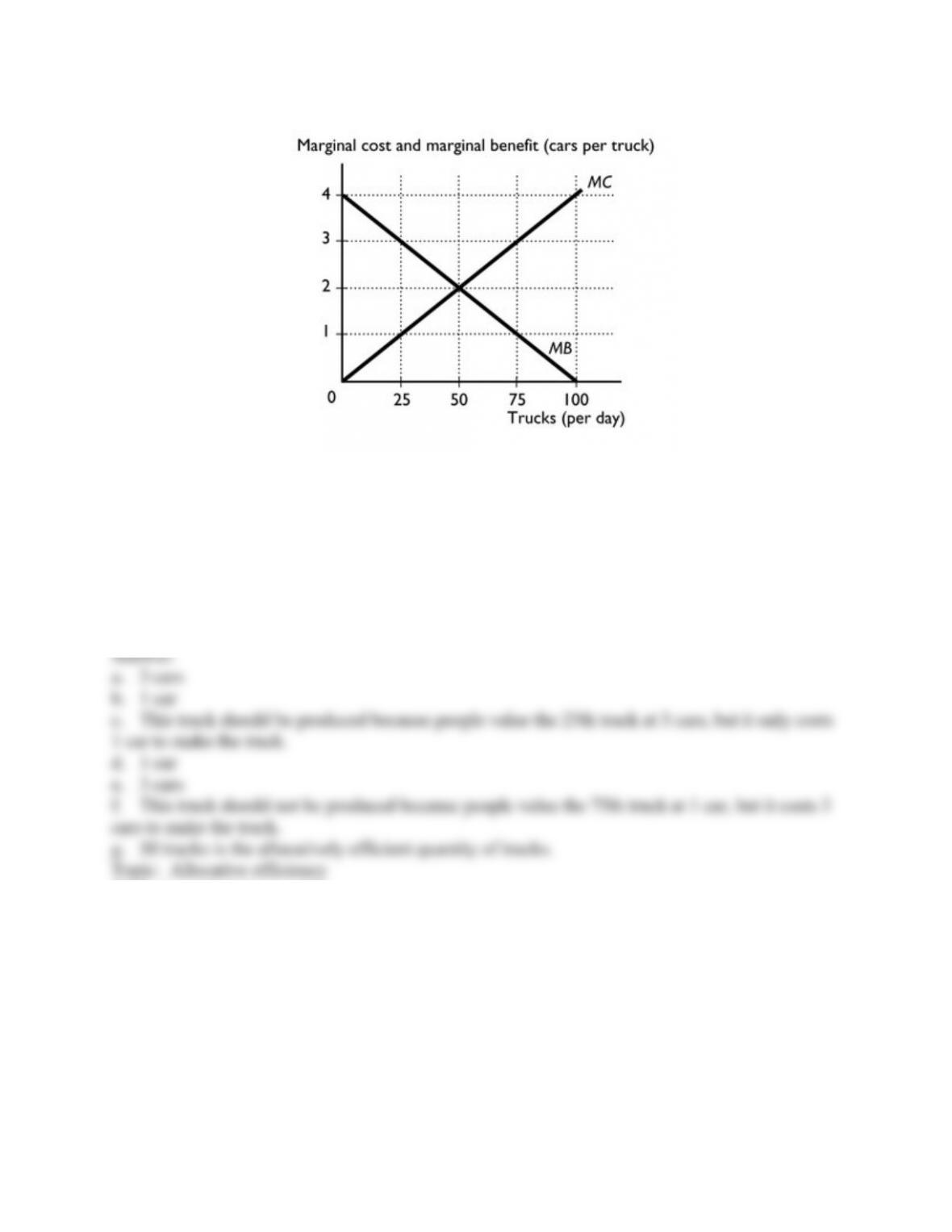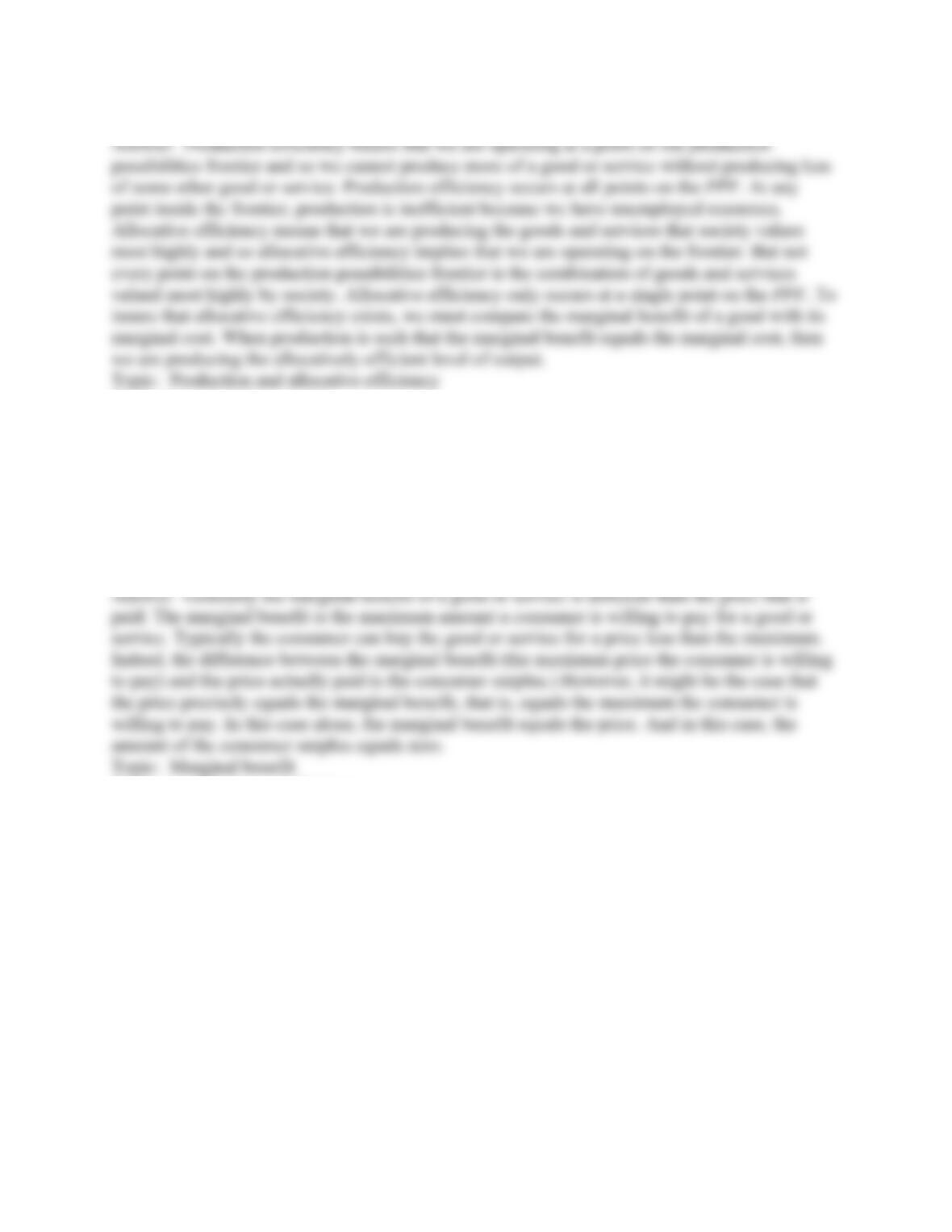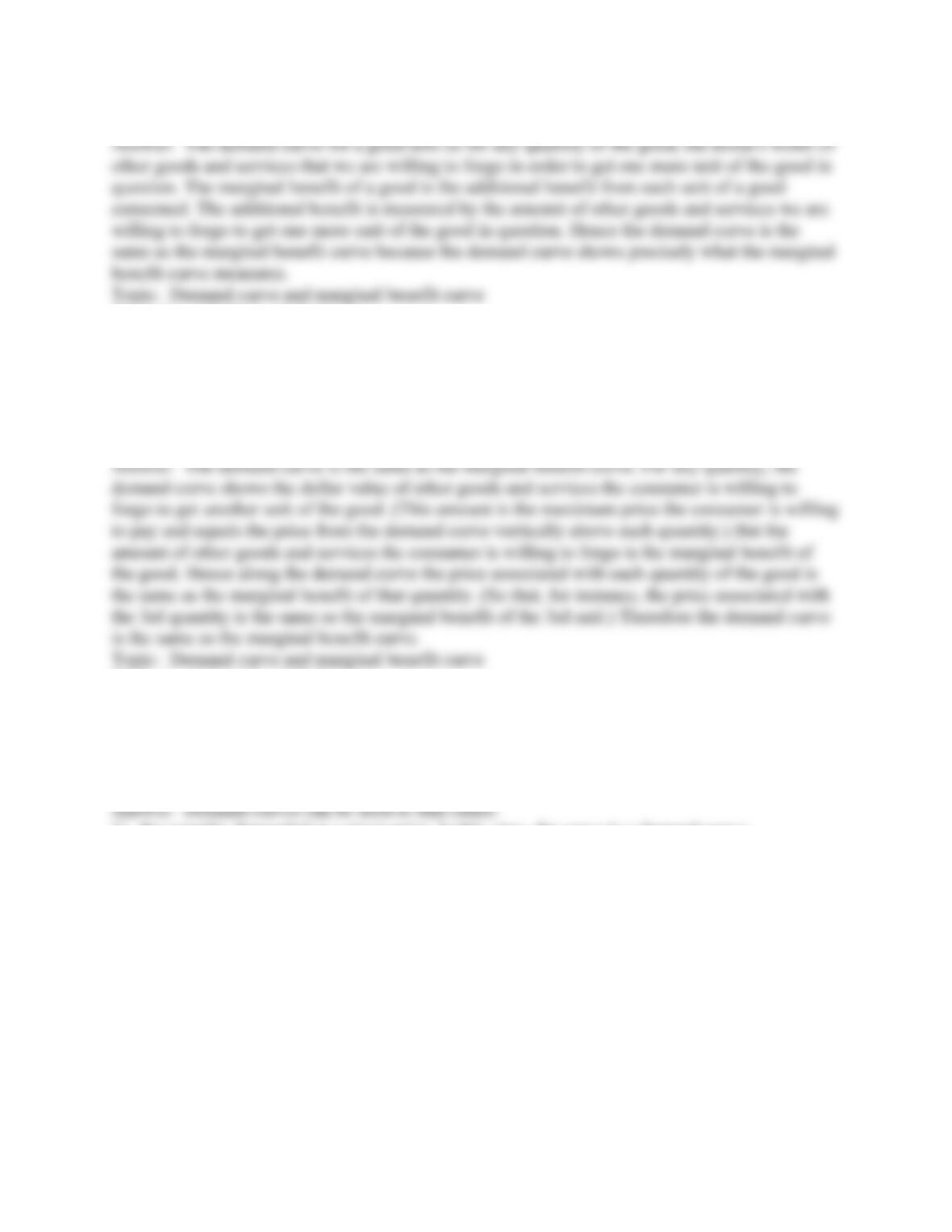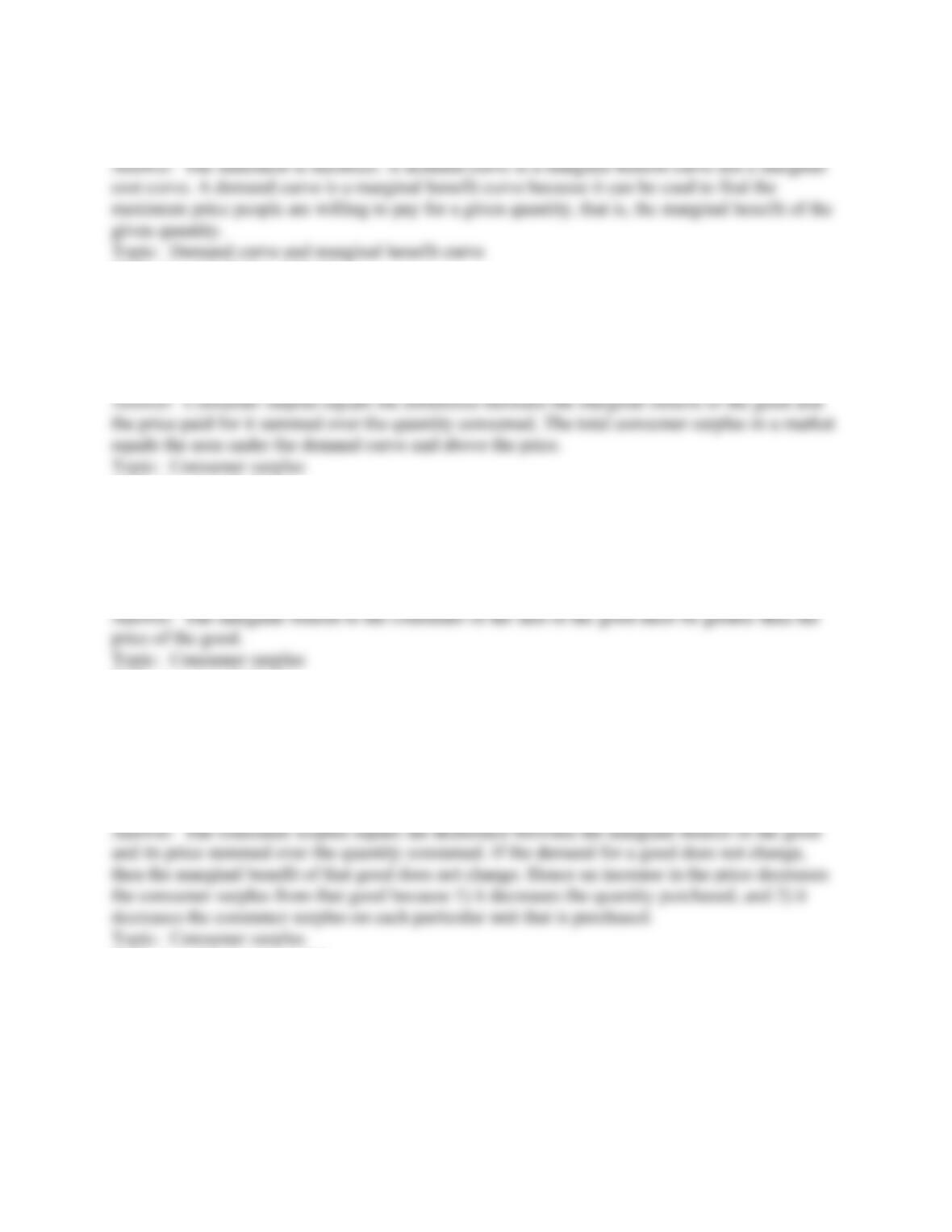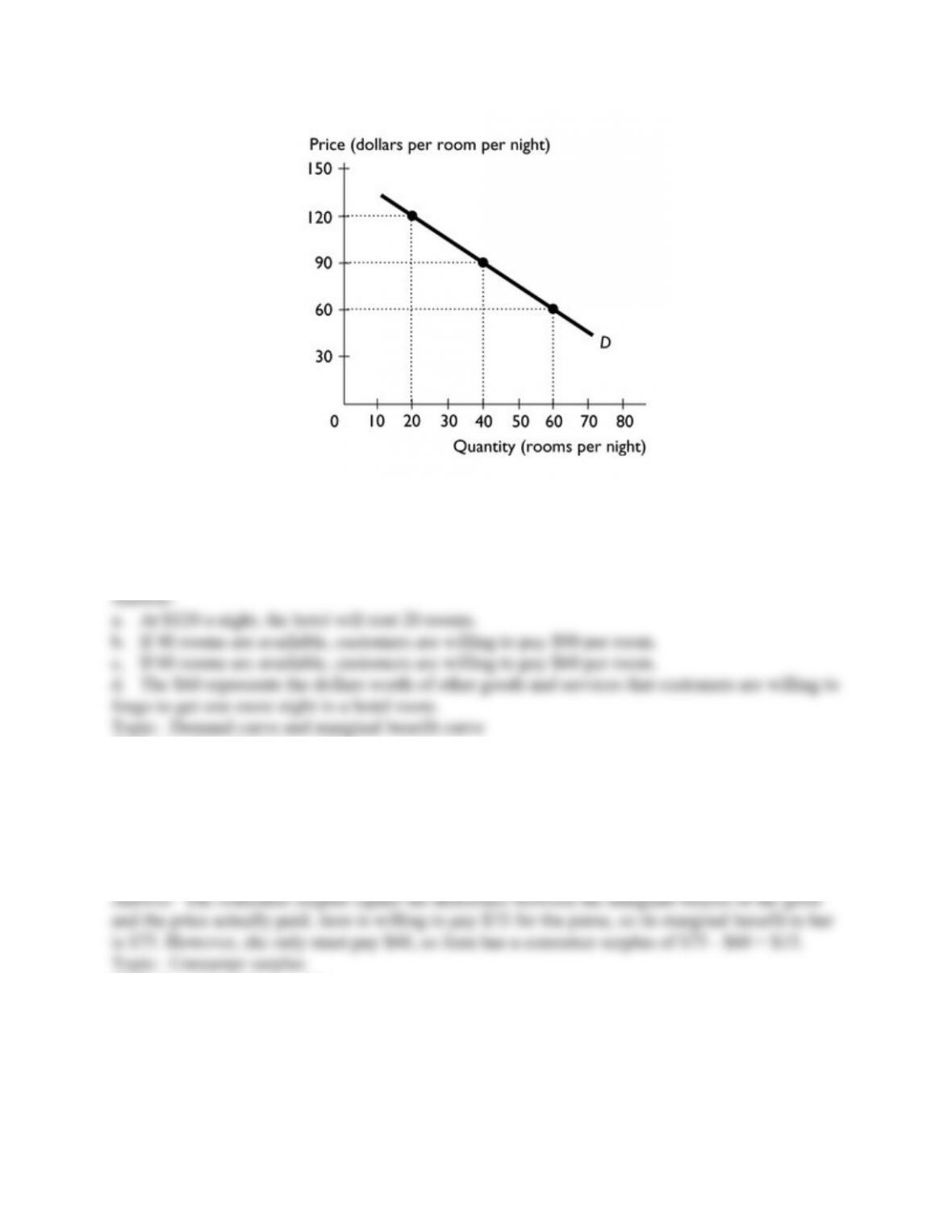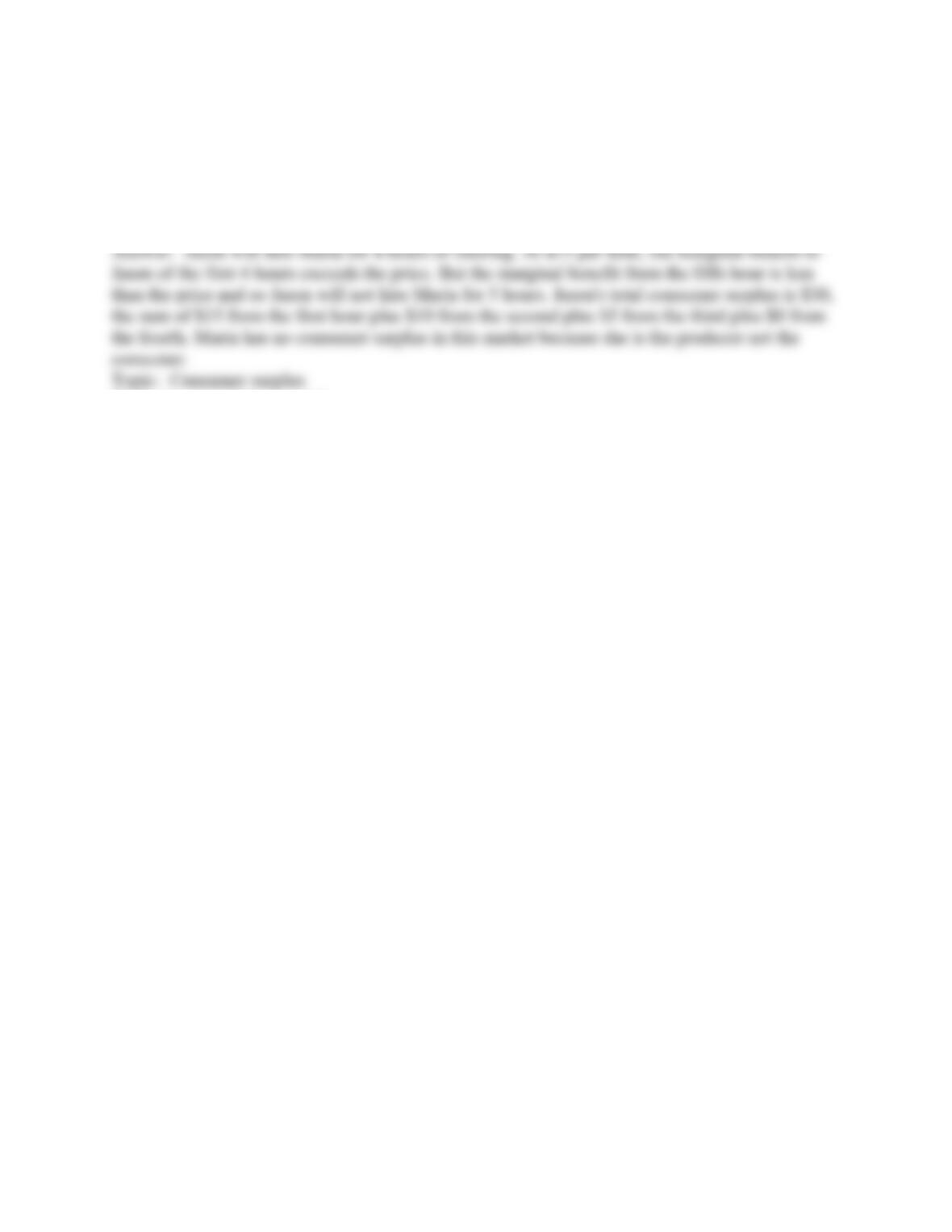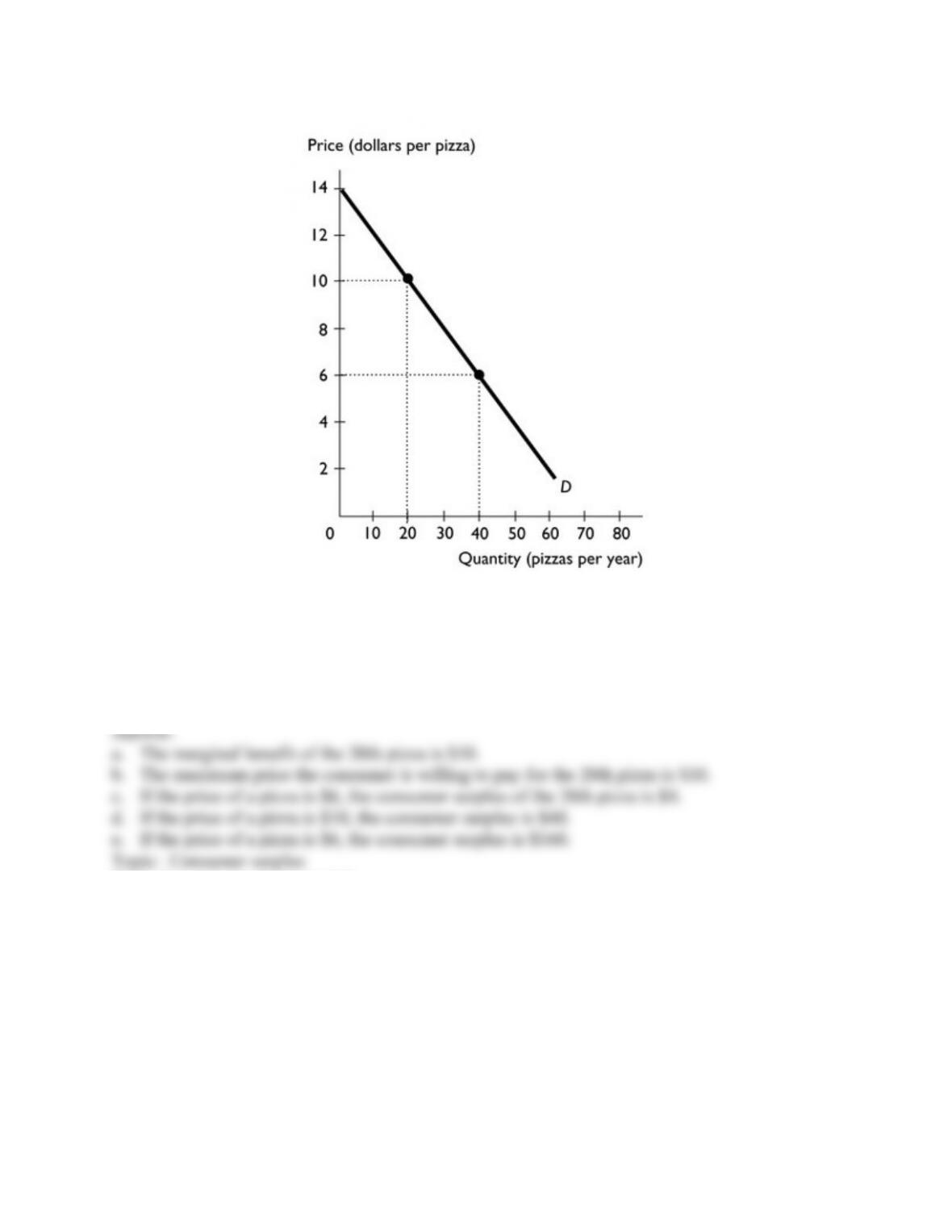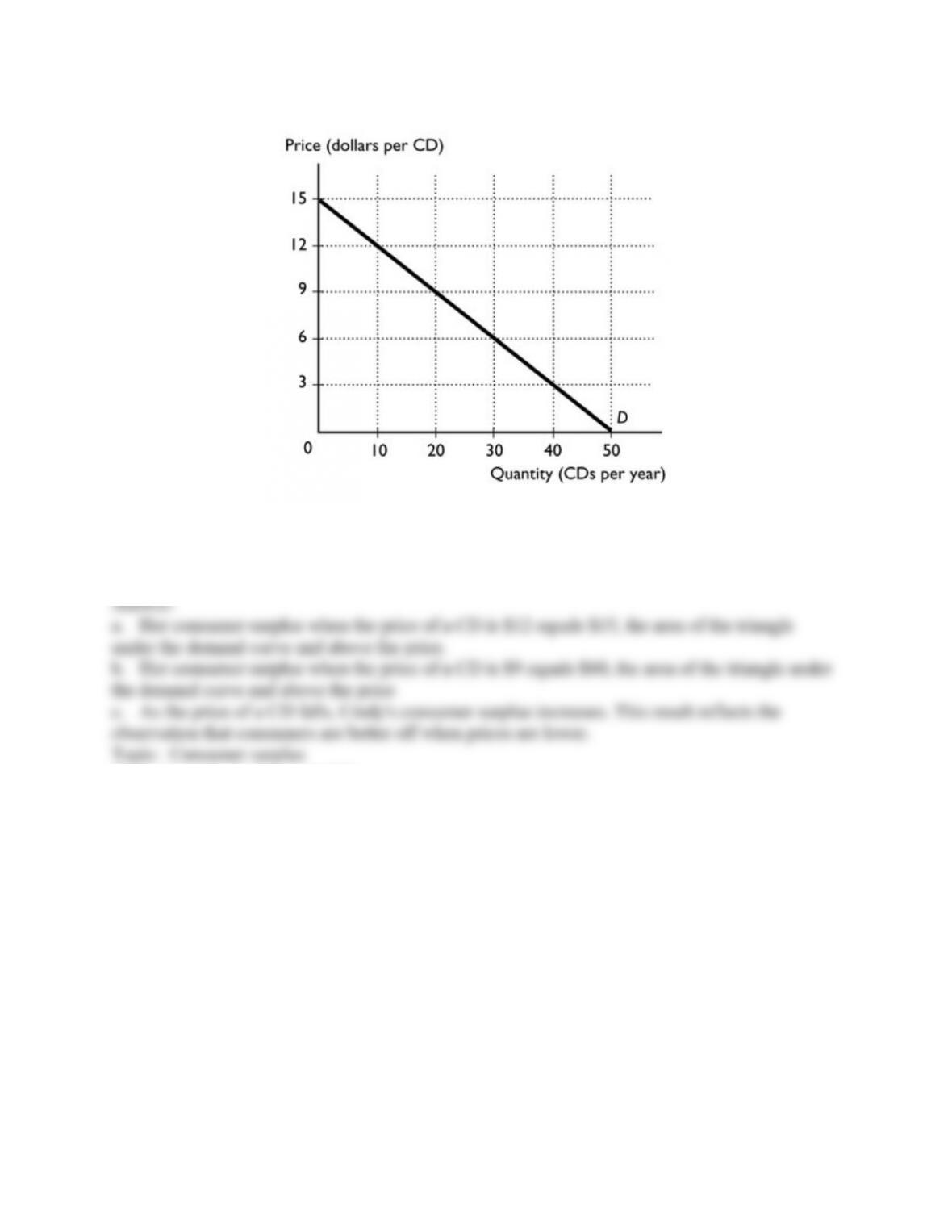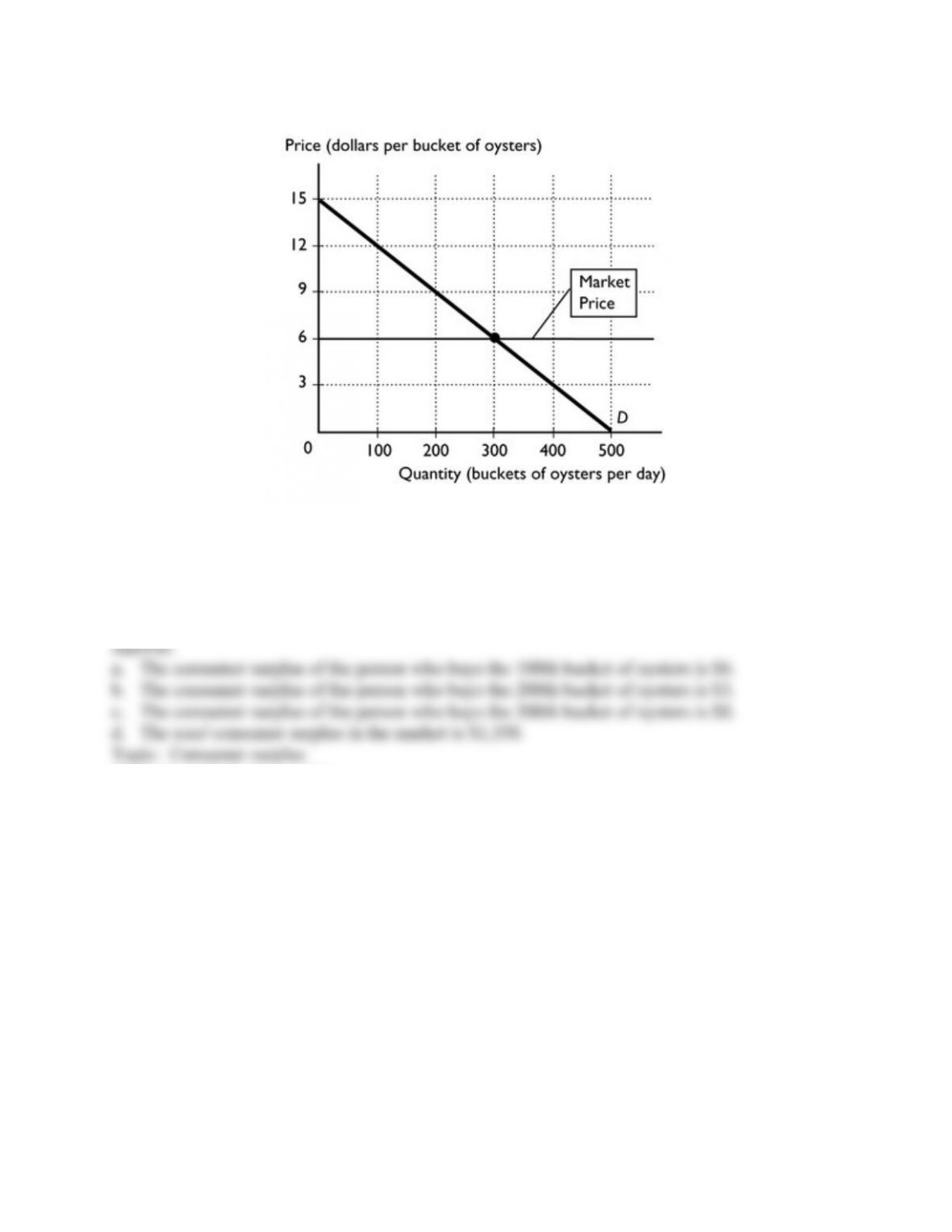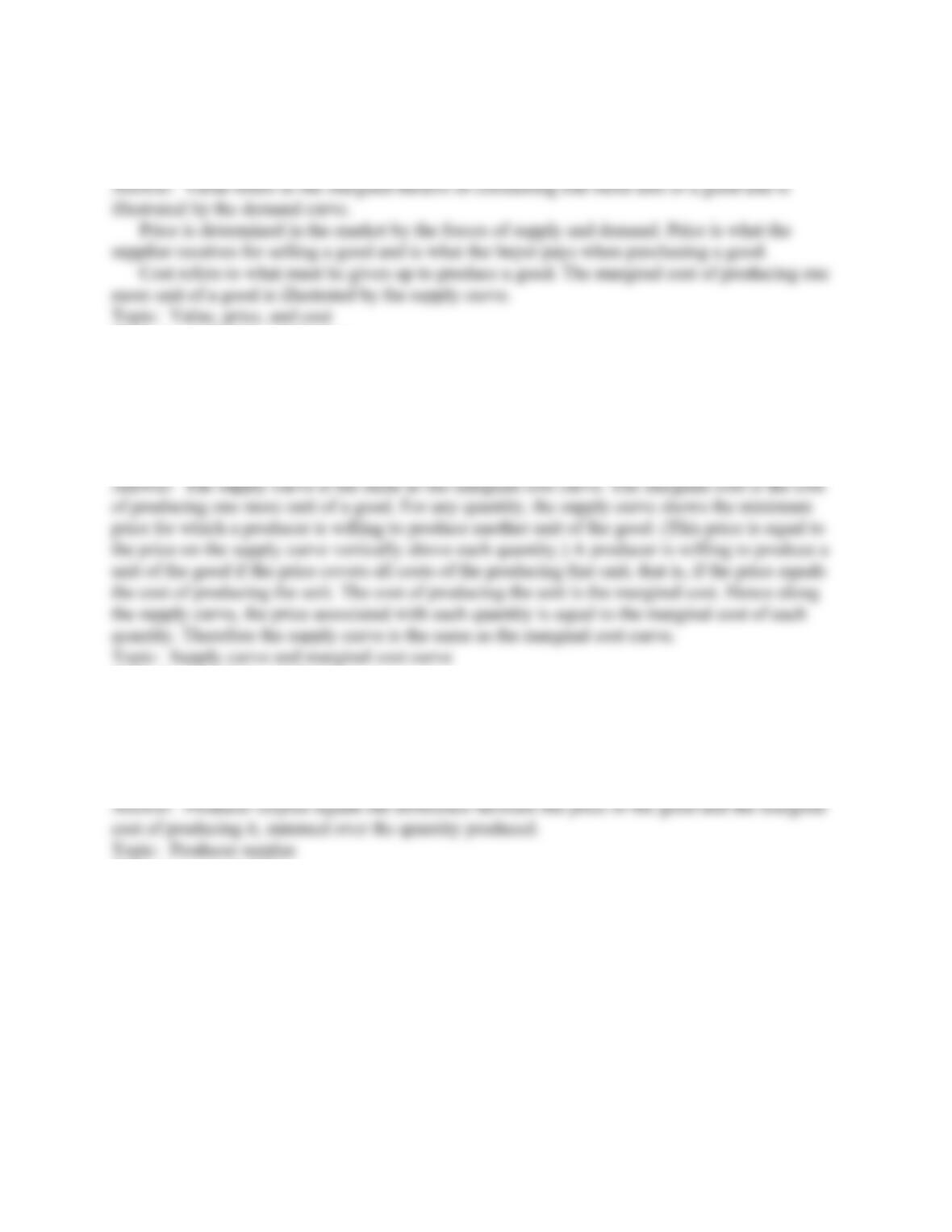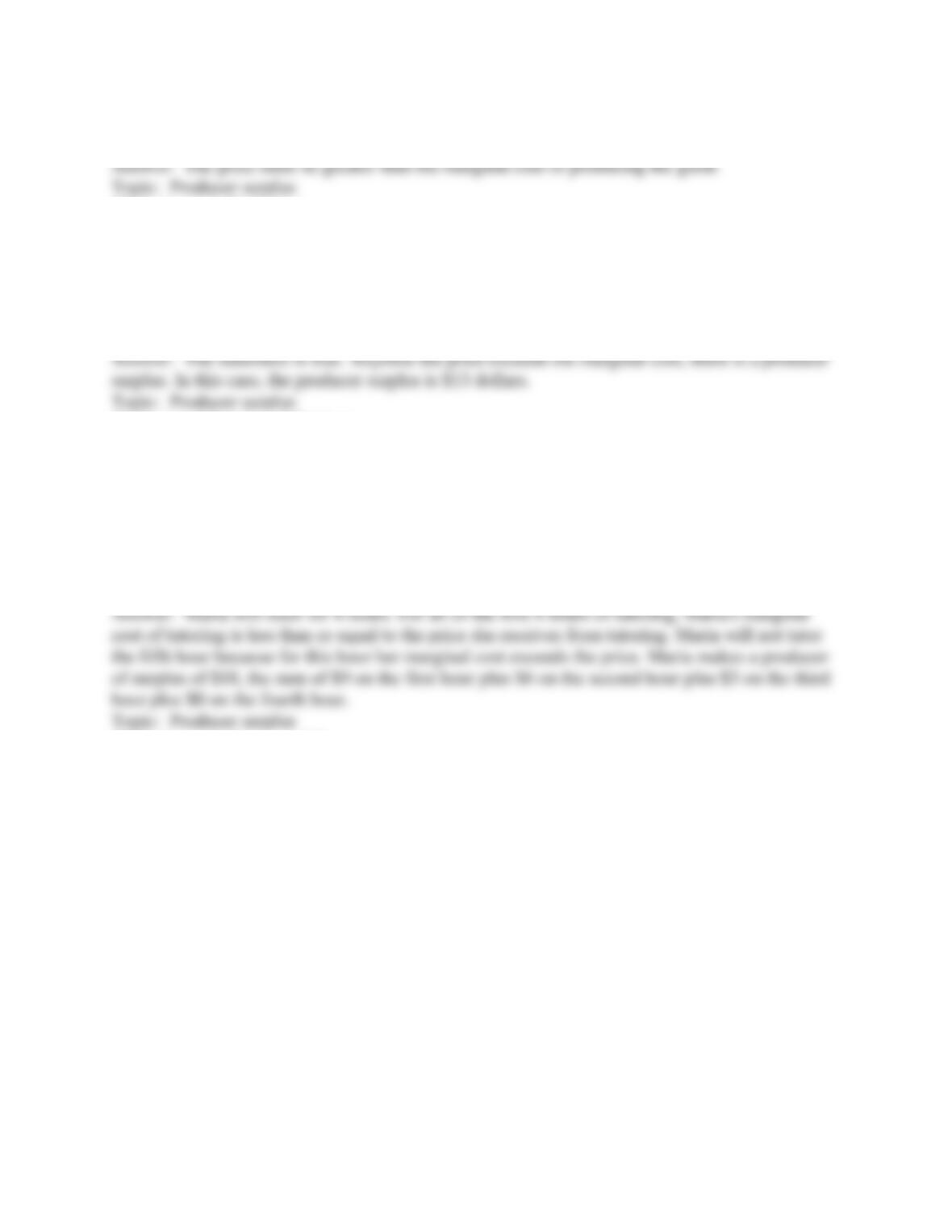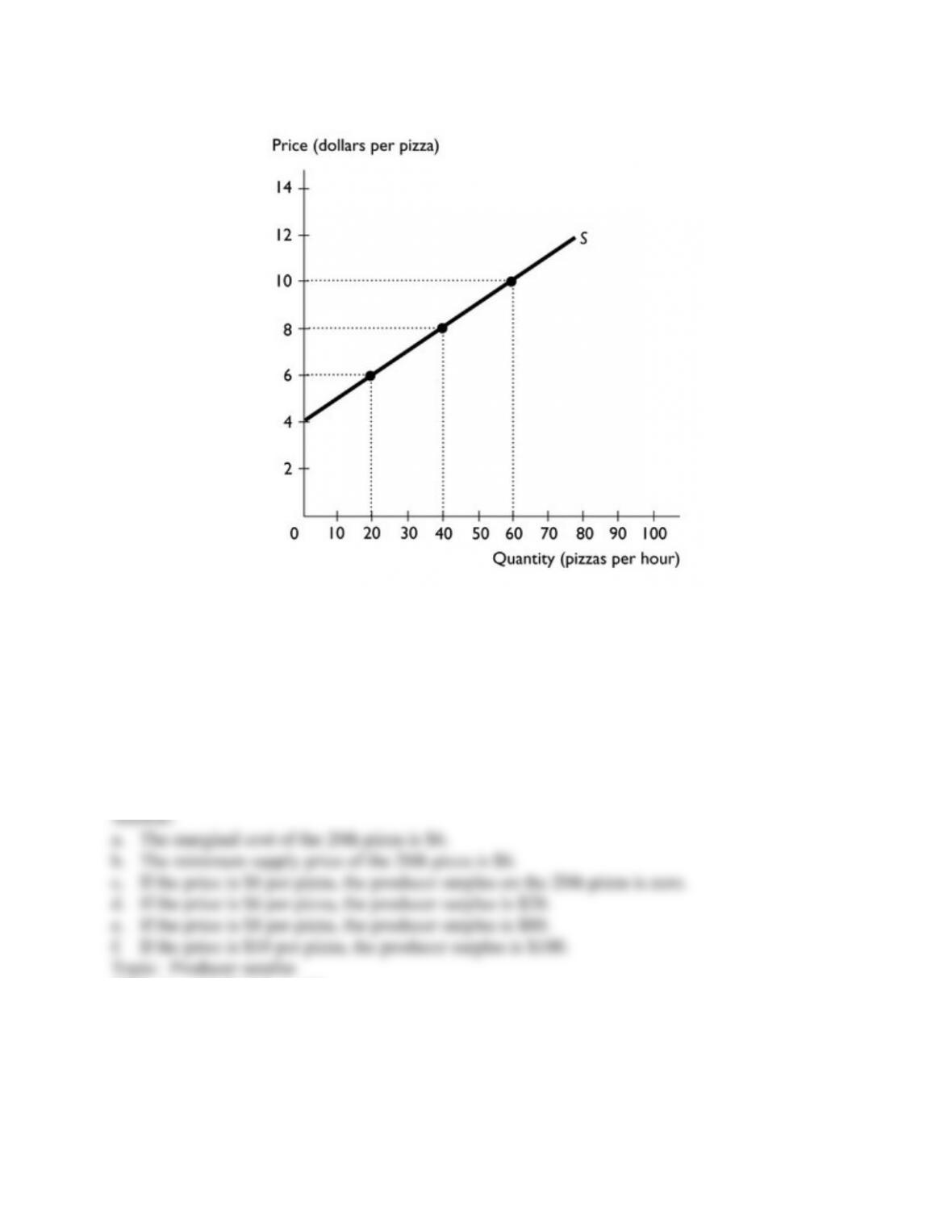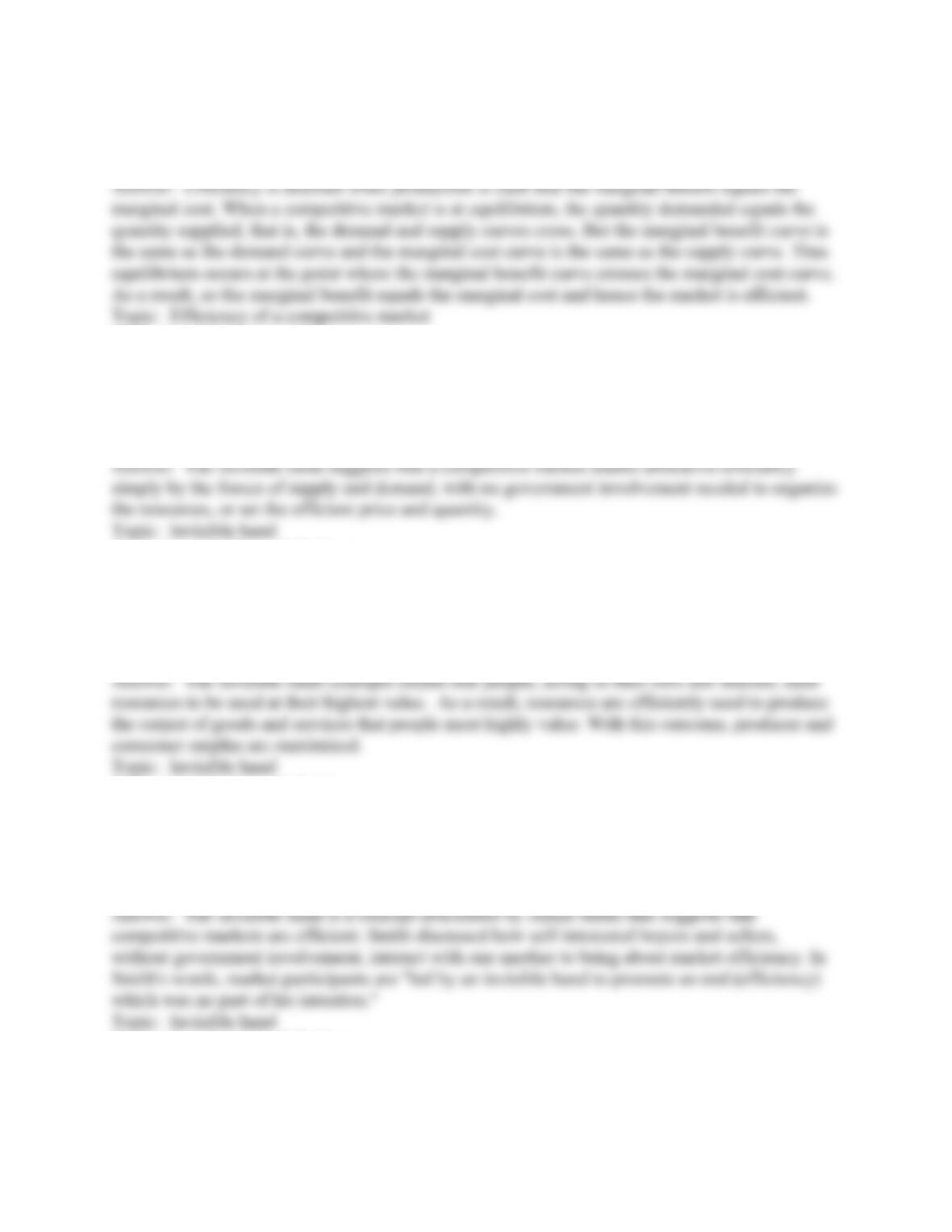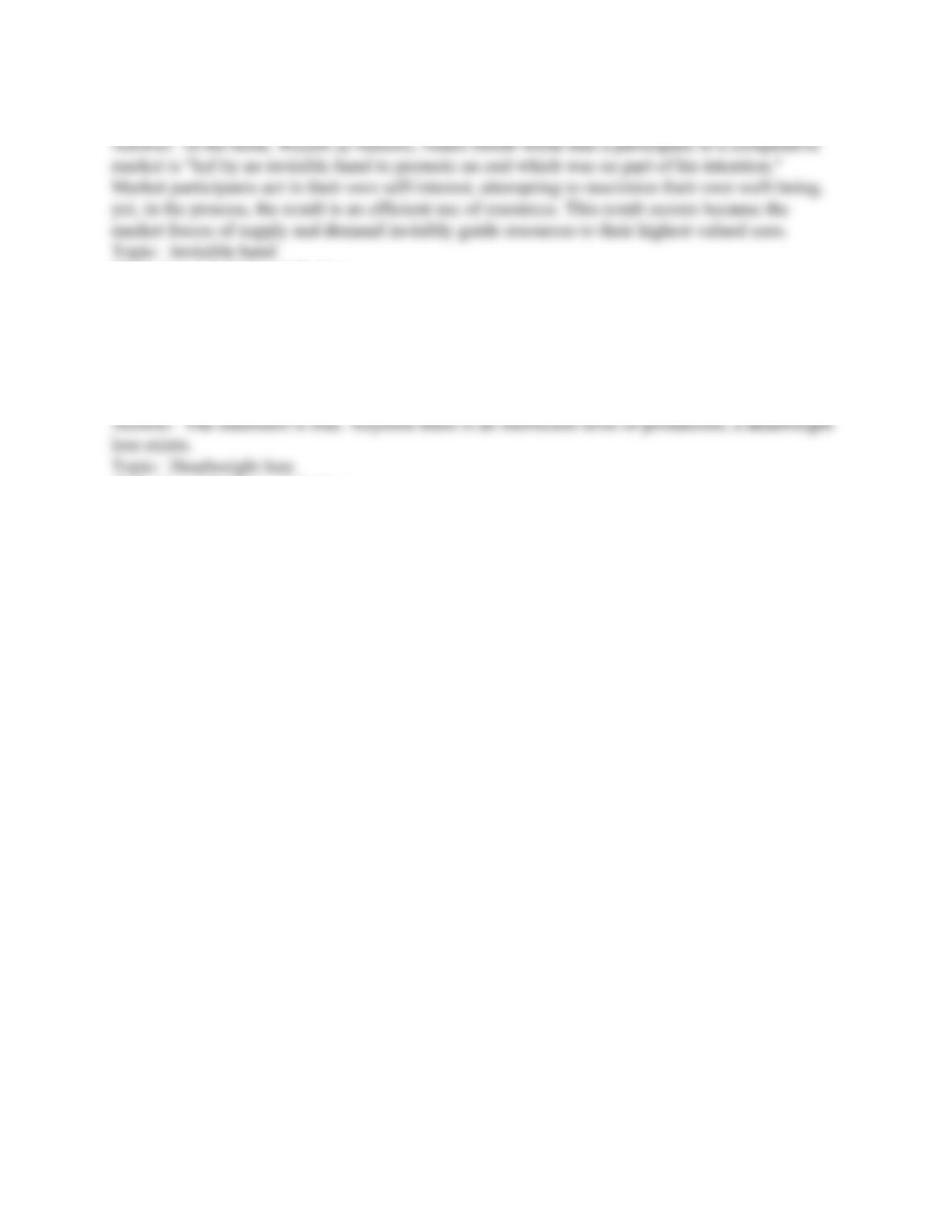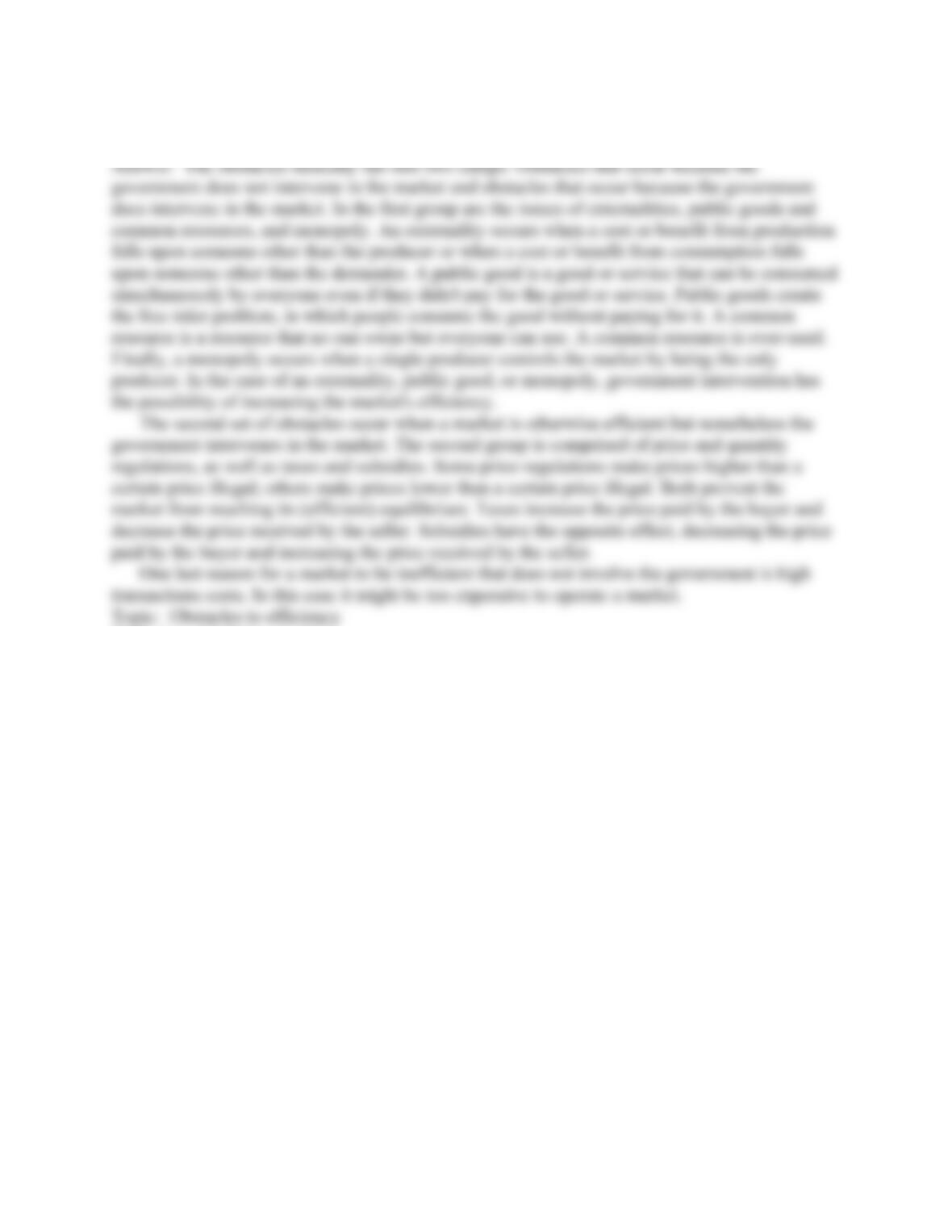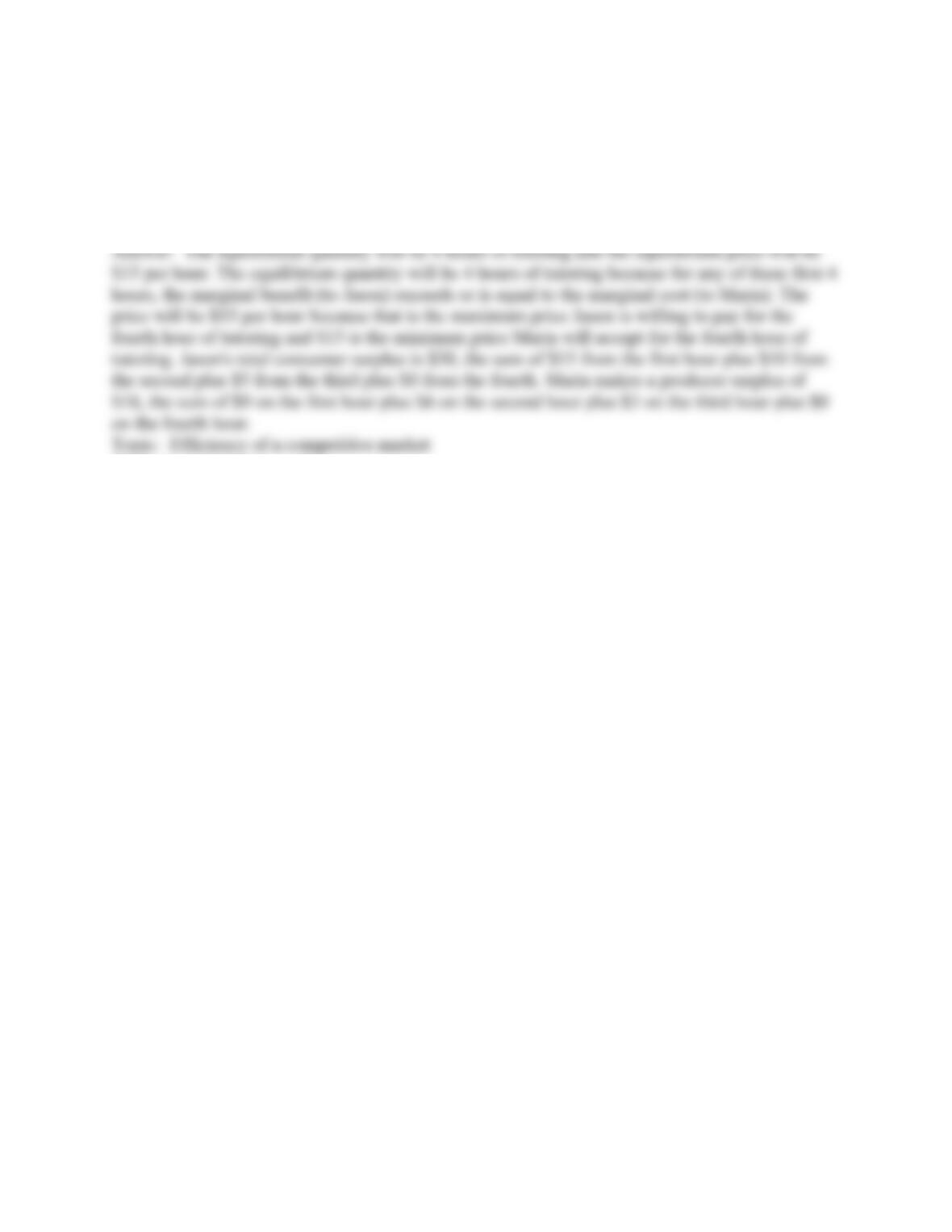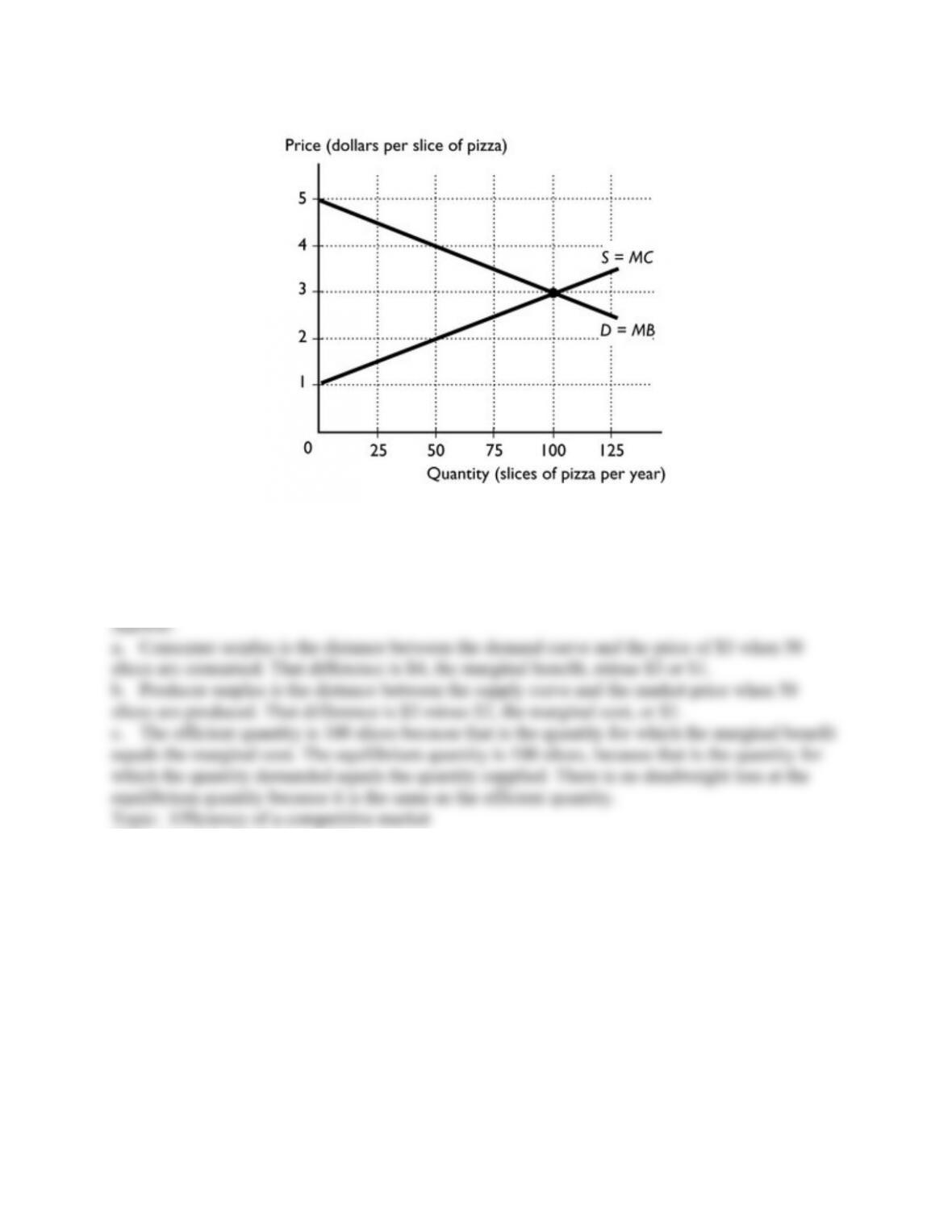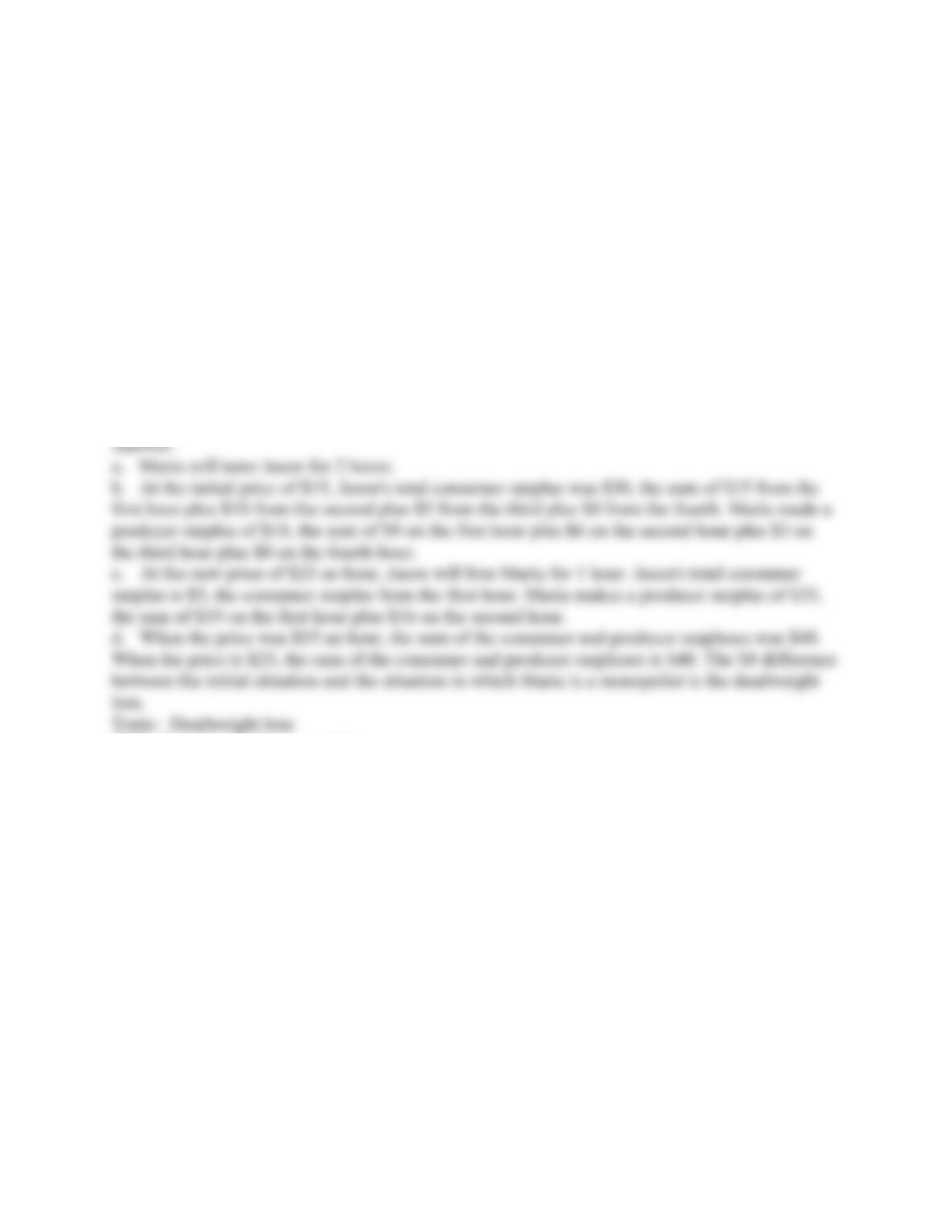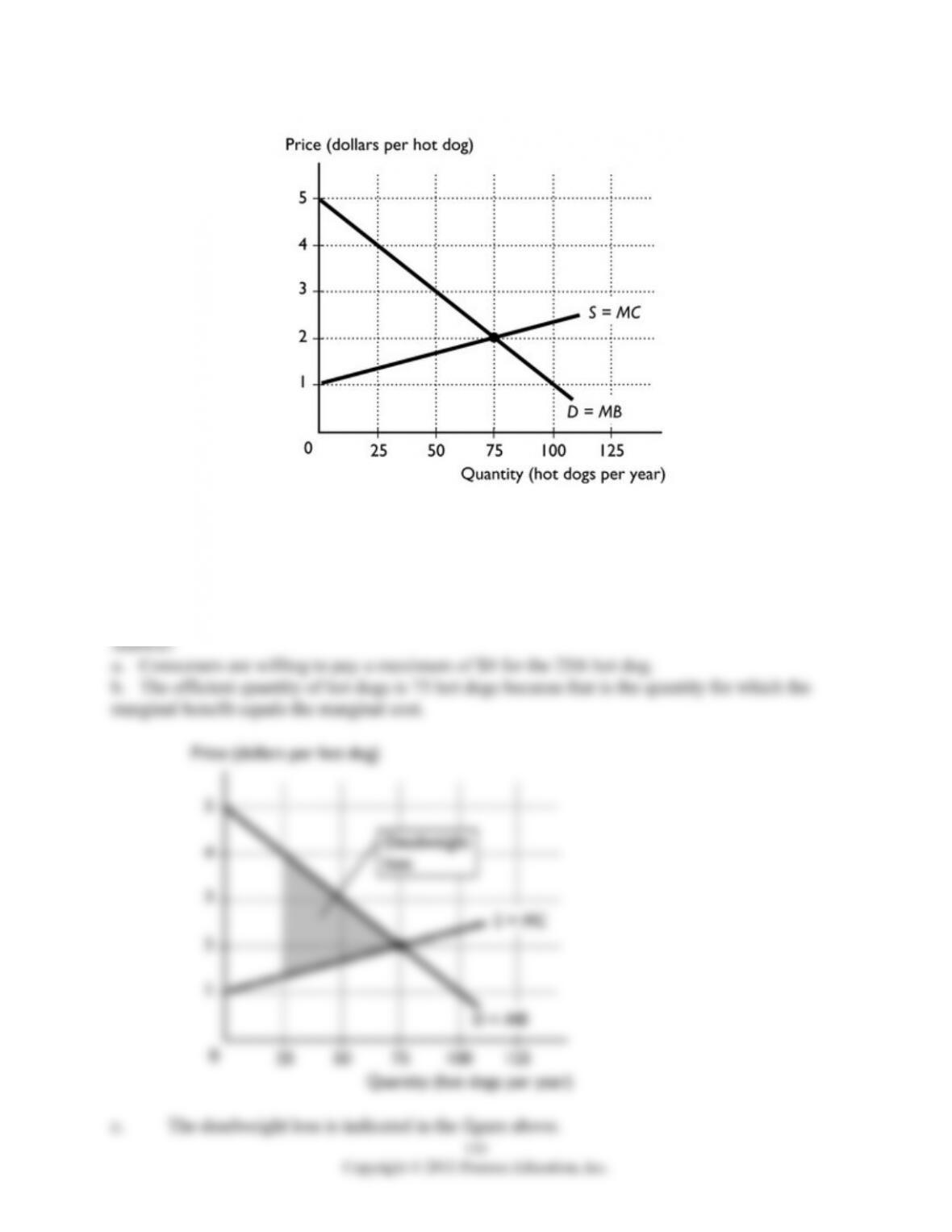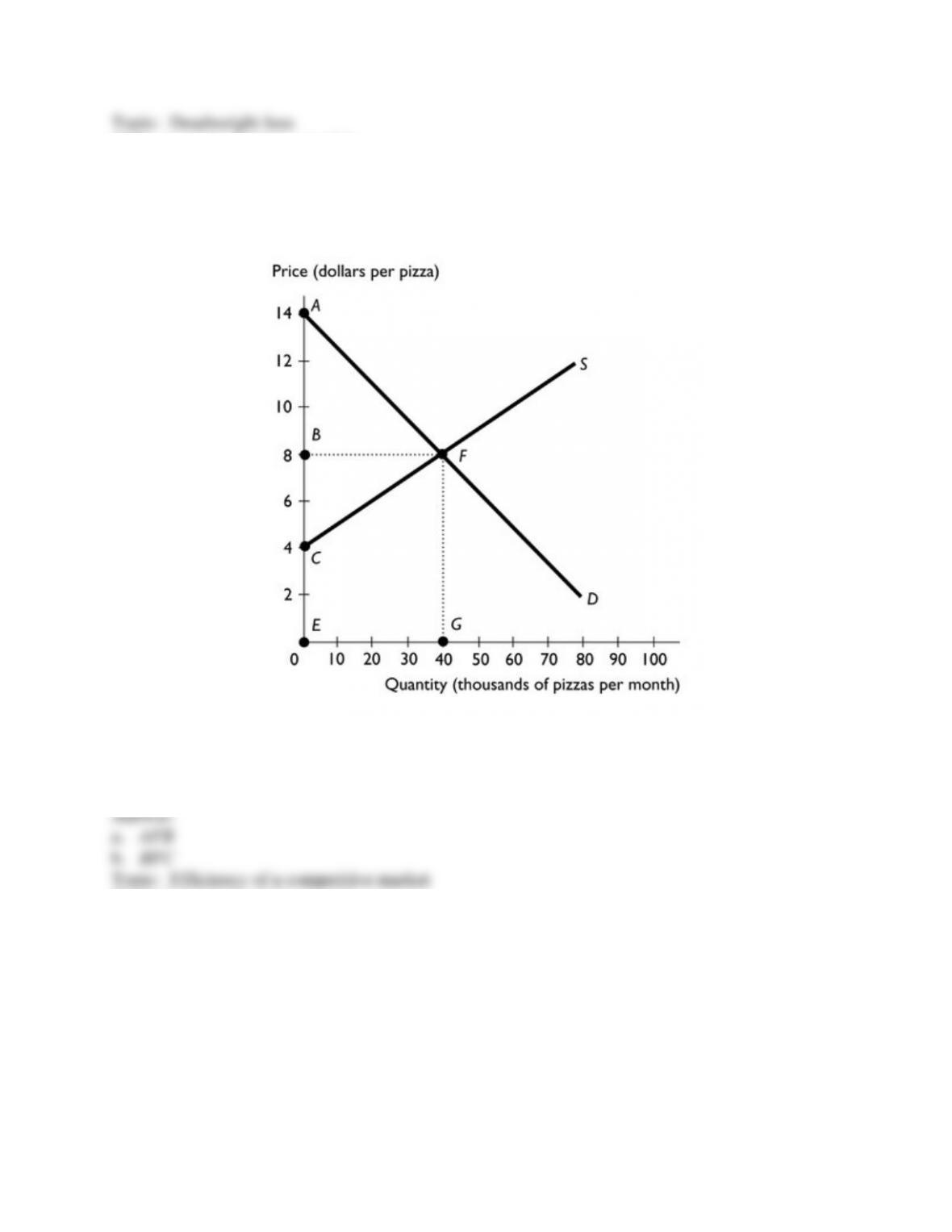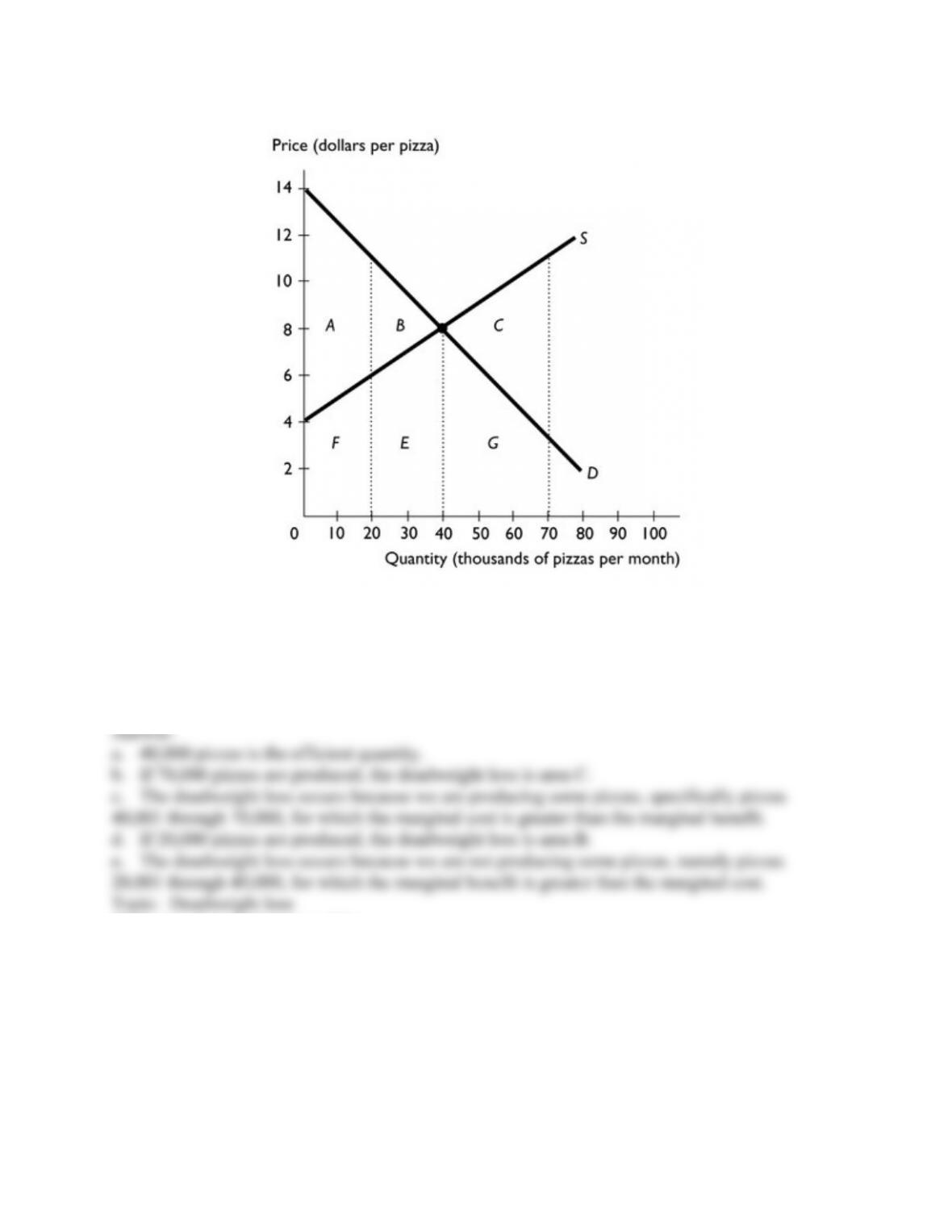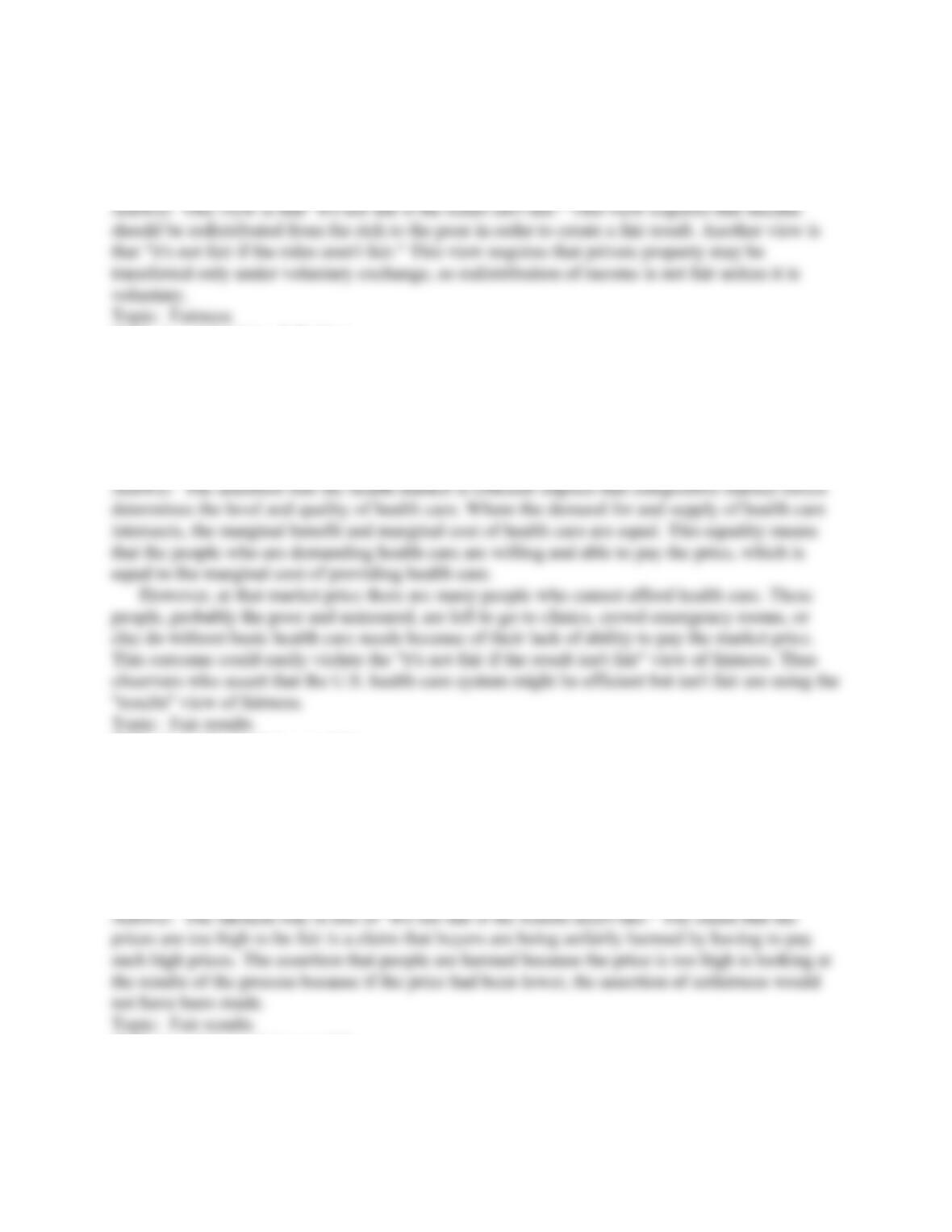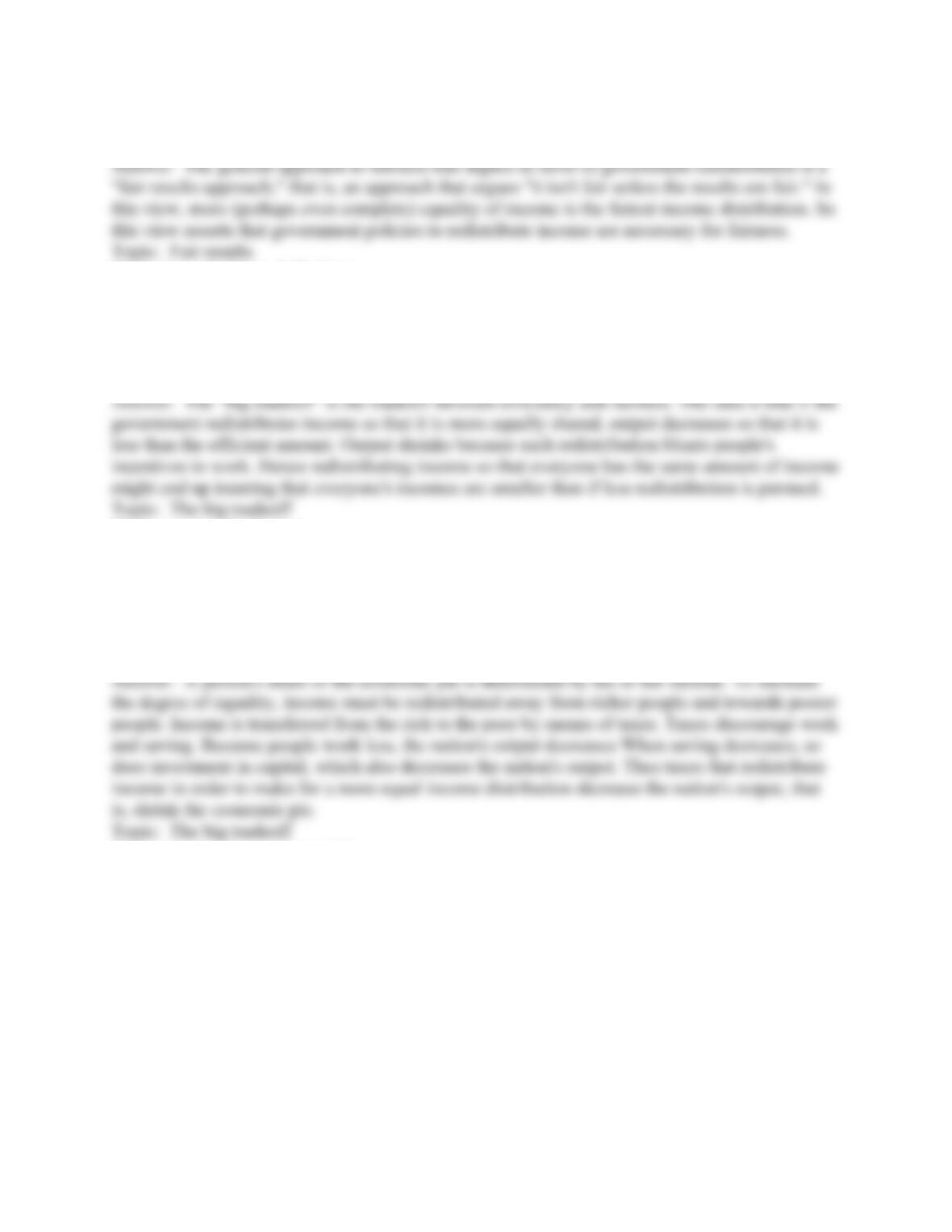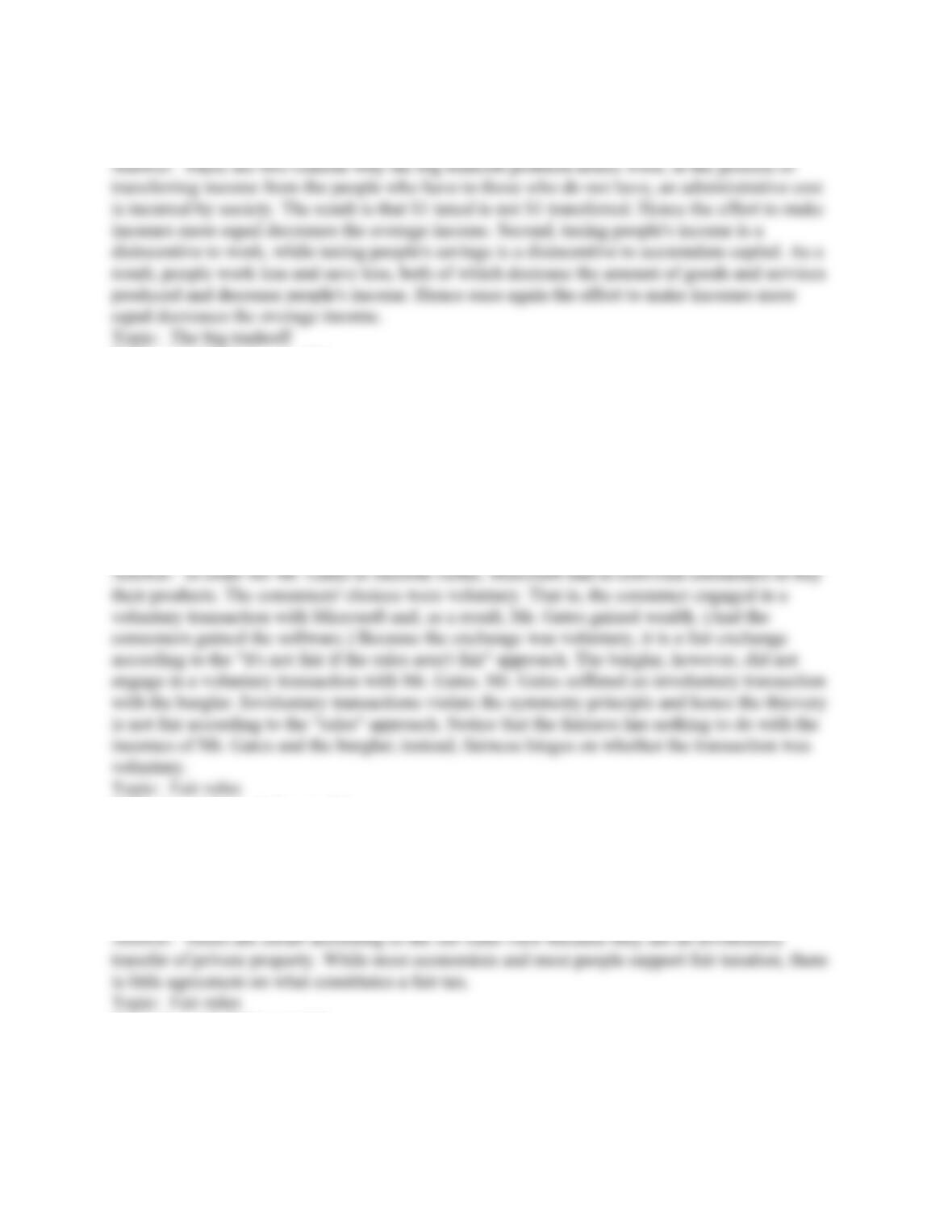97
Copyright © 2011 Pearson Education, Inc.
1) In the figure above, production efficiency occurs at ________, and allocative efficiency
occurs at ________.
A) all points on the PPF; only one point on the PPF
B) only one point on the PPF; all points on the PPF
C) only one point on the PPF; only one point on the PPF
D) all points on the PPF; all points on the PPF
E) all points on the PPF; all points above the PPF
Skill: Level 2: Using definitions
Section: Checkpoint 6.1
Author: CO
AACSB: Analytical reasoning
2) In the figure above, when 2,000 pizzas are produced, the marginal benefit of a pizza ________
its marginal cost, which means ________ pizza is being produced.
A) exceeds its marginal cost; too little
B) exceeds its marginal cost; too much
C) is below its marginal cost; too much
D) is below its marginal cost; too little
E) equals its marginal cost; the efficient quantity of
Skill: Level 3: Using models
Section: Checkpoint 6.1
Author: CO
AACSB: Analytical reasoning
3) In the figure above, when 6,000 pizzas are produced, the marginal benefit of a pizza ________
its marginal cost, which means ________ pizza is being produced.
A) exceeds its marginal cost; too little
B) exceeds its marginal cost; too much
C) is below its marginal cost; too much
D) is below its marginal cost; too little
E) equals its marginal cost; the efficient quantity of
Skill: Level 3: Using models
Section: Checkpoint 6.1
Author: CO
AACSB: Analytical reasoning




























































































